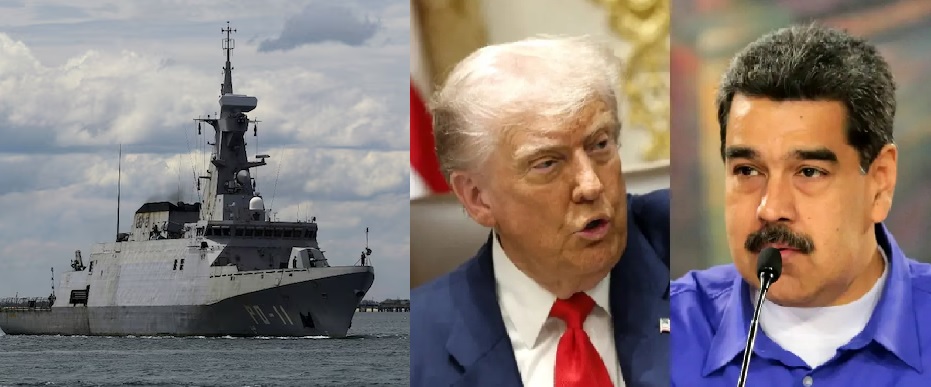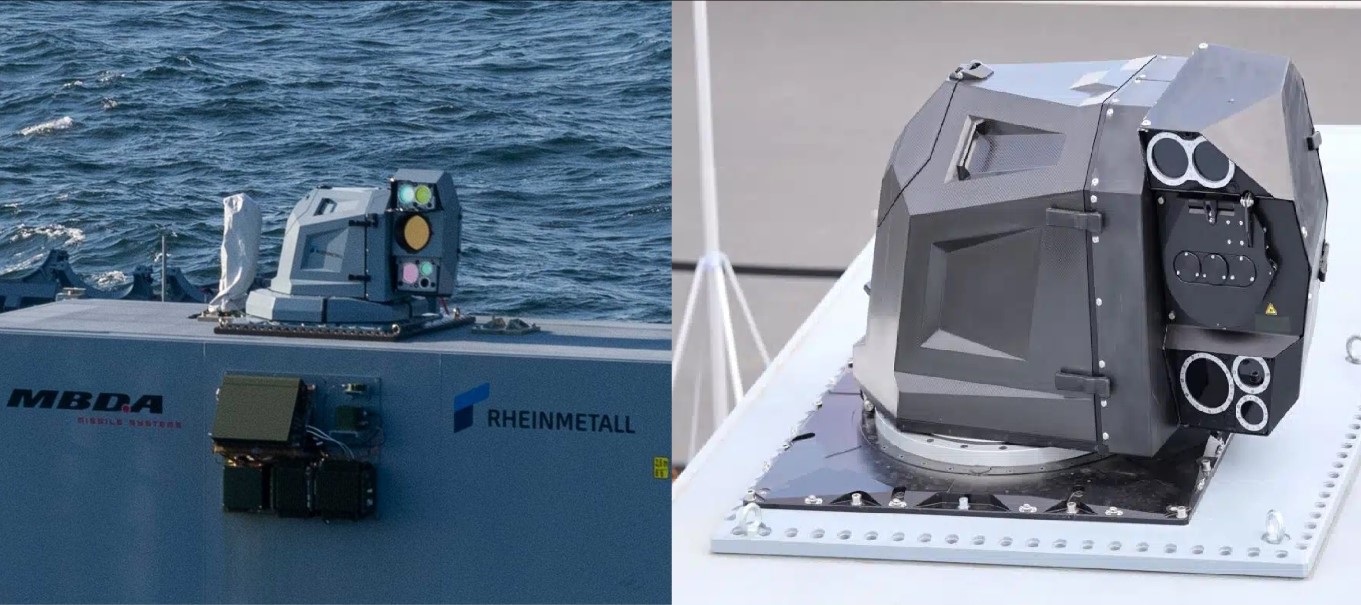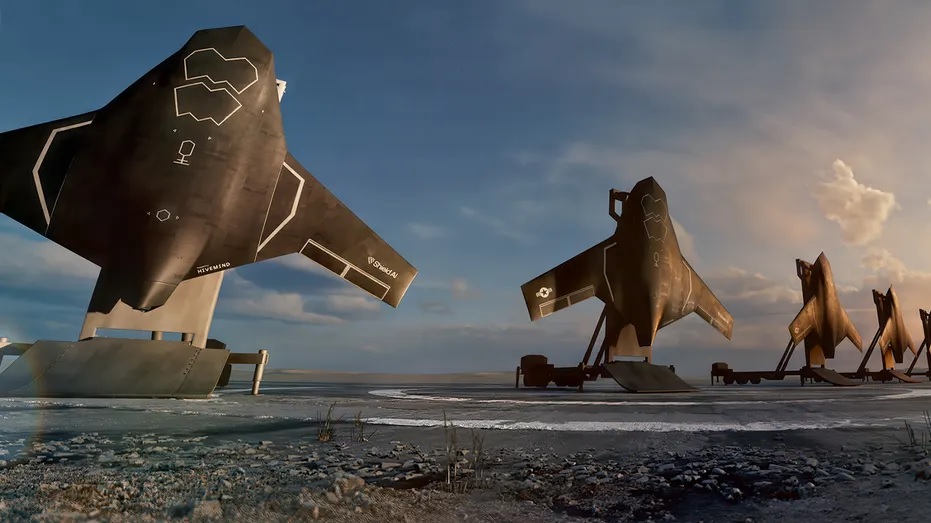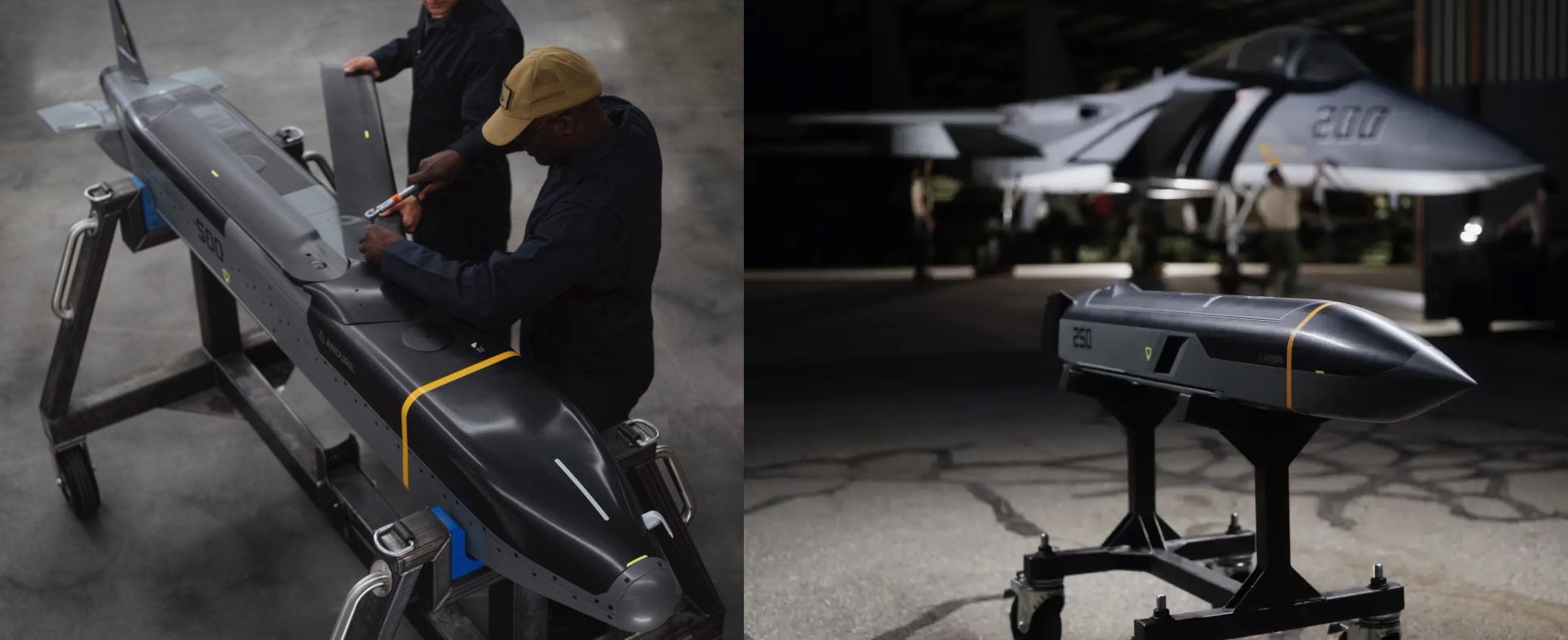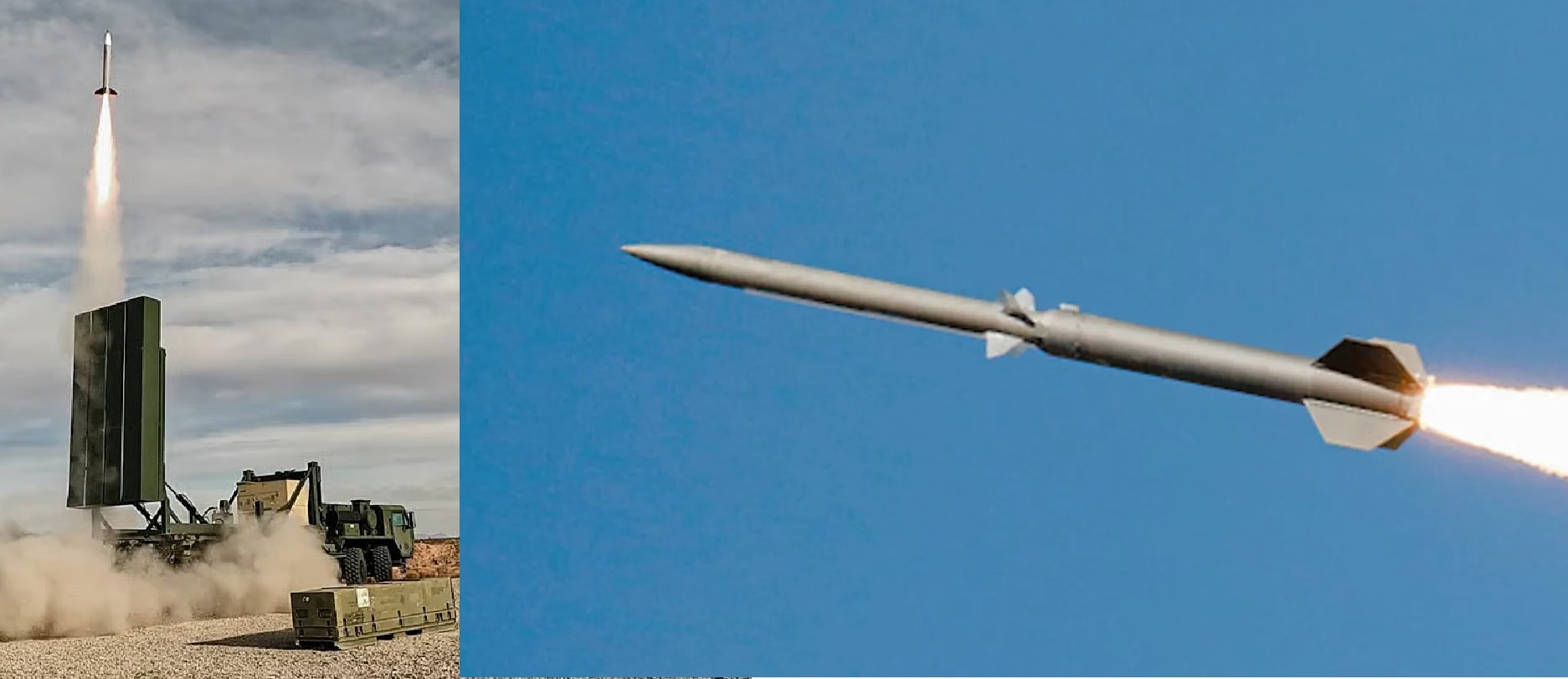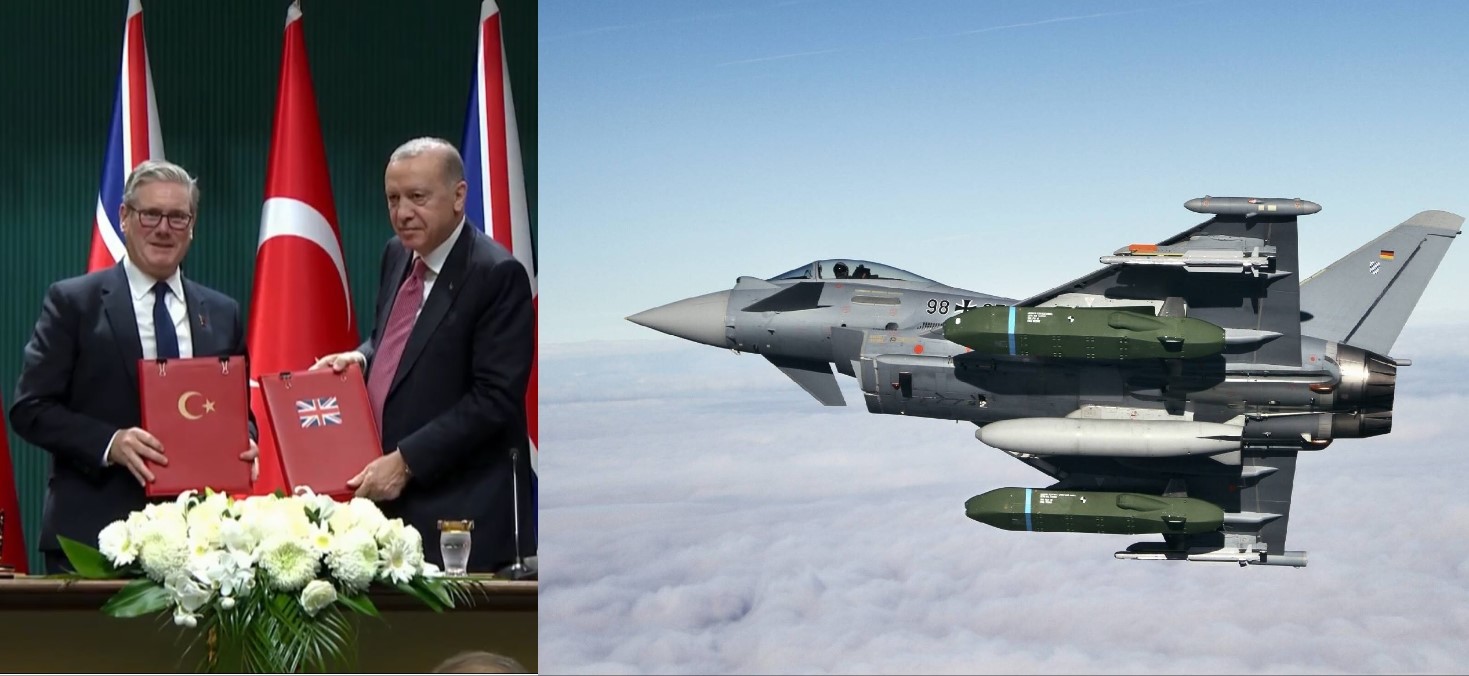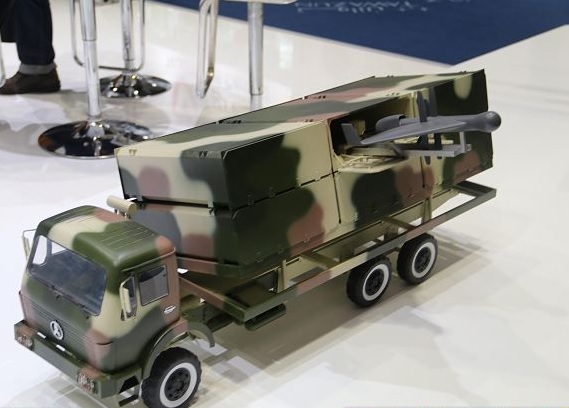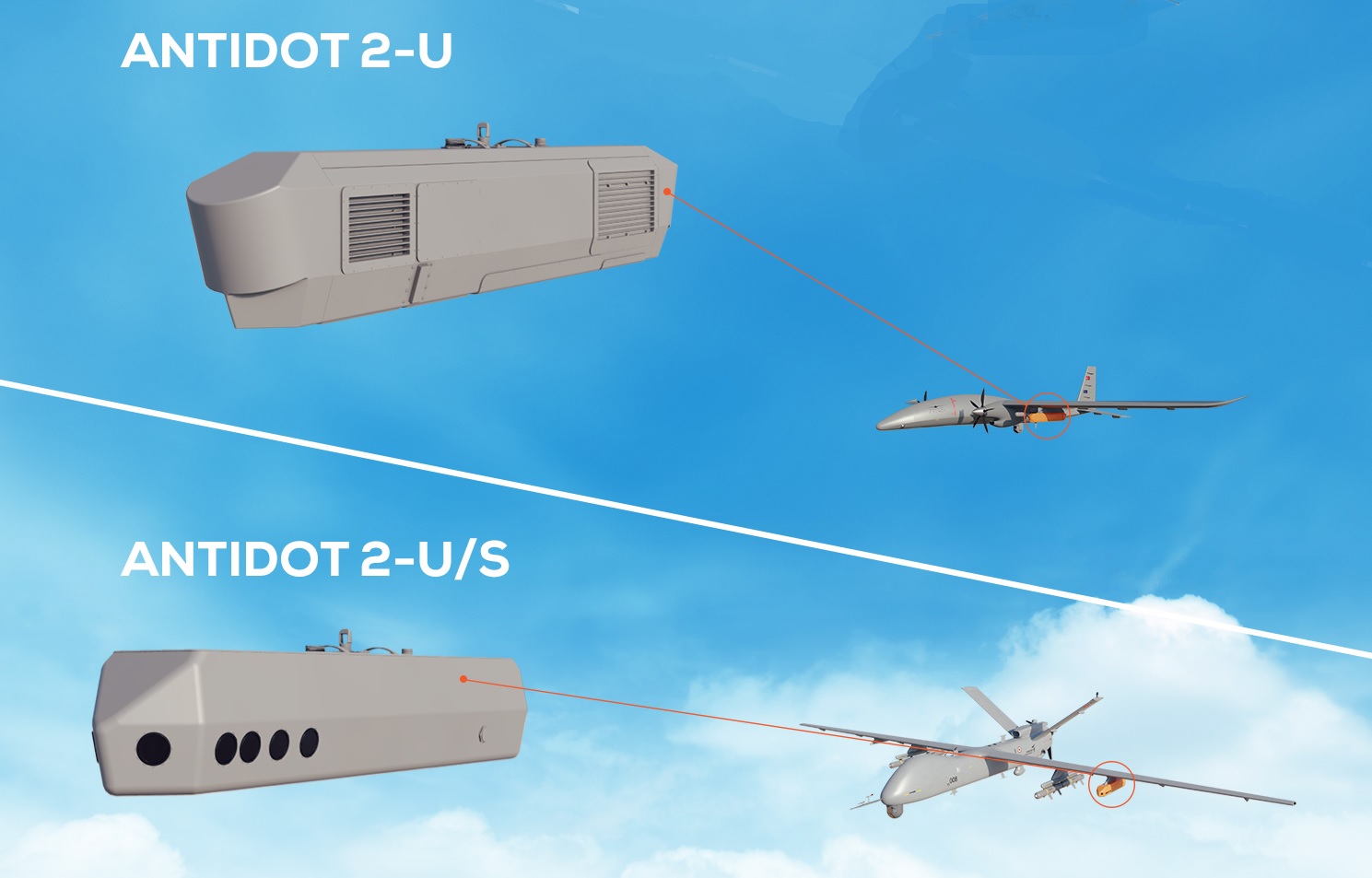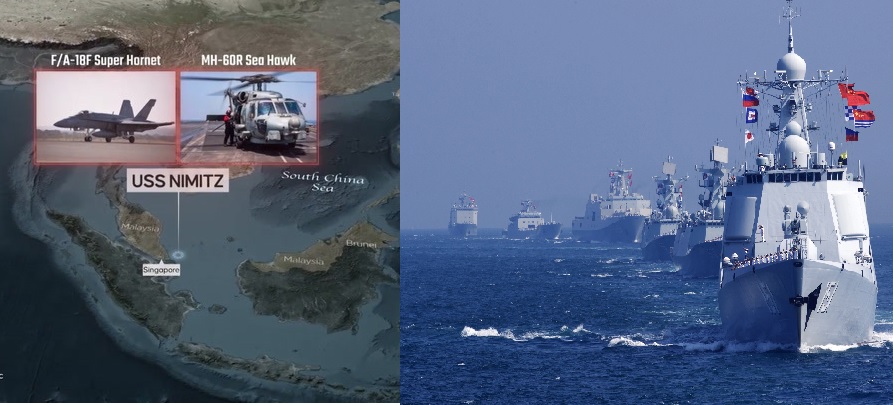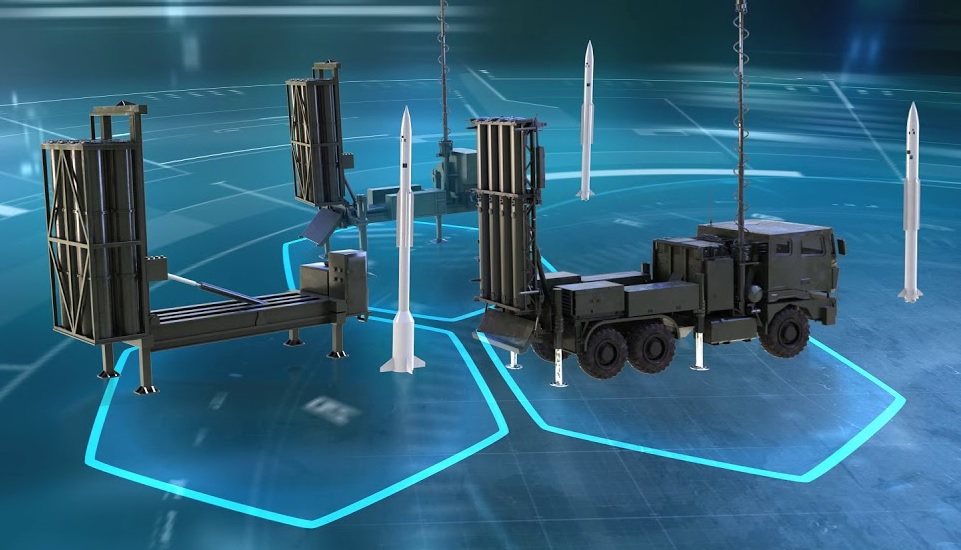World
Venezuela’s government announced on Sunday that it had captured a “mercenary group” allegedly linked to the U.S. Central Intelligence Agency (CIA) — a claim that, if true, could mark one of the most serious incidents between Washington and Caracas in recent years. According to Vice President Delcy Rodríguez, the detained individuals were supposedly plotting a “false flag attack” aimed at sparking a military conflict in the Caribbean, particularly near the waters separating Trinidad and Tobago and Venezuela. Rodríguez accused the CIA of being directly involved in coordinating the alleged plot, which she described as an operation designed to provoke U.S. military retaliation or regional instability. “A false flag attack is underway in waters bordering Trinidad and Tobago or from Trinidadian or Venezuelan territory to generate a full military confrontation with our country,” she said in a televised statement. However, the Venezuelan official offered no verifiable evidence, nor did she specify how many people had been captured, their nationalities, or the nature of their mission. President Nicolás Maduro, speaking later in a separate address broadcast nationally, said that Venezuela was suspending all energy cooperation agreements with Trinidad and Tobago, citing “security concerns and foreign interference.” The suspension affects a series of joint gas exploration and pipeline projects in the Dragon Field, a key natural gas reserve off the Venezuelan coast that was intended to supply Trinidad’s liquefied natural gas (LNG) plants. The move underscores a serious deterioration in regional energy ties just months after both nations had restored dialogue to boost economic cooperation. Maduro’s administration compared the alleged CIA-linked operation to historic provocations that triggered major wars, invoking the 1898 USS Maine explosion—which led to the Spanish-American War—and the 1964 Gulf of Tonkin incident, which preceded America’s deep involvement in Vietnam. “History teaches us that imperial powers manufacture excuses to justify invasions,” Rodríguez said, portraying Venezuela as a potential target of a similar plot. A Brewing Storm in the Caribbean The accusation arrives amid a sharp rise in U.S. military activity in the Caribbean. Just last week, War Secretary Pete Hegseth ordered the deployment of the USS Gerald R. Ford Carrier Strike Group to the region as part of expanded operations against drug cartels believed to have ties to the Maduro regime. U.S. officials have accused top Venezuelan military and political leaders of facilitating narcotics trafficking through the Caribbean and into Central America. The Pentagon confirmed over ten U.S. airstrikes in recent weeks targeting suspected narco-trafficking boats operating in the Caribbean Sea and Eastern Pacific, reportedly killing more than 30 individuals. These operations form part of a larger campaign combining naval patrols, drone surveillance, and intelligence-sharing with Caribbean allies to disrupt what Washington calls “narco-terrorist networks backed by hostile regimes.” Compounding tensions, joint U.S.–Trinidad and Tobago military exercises are currently underway in the southern Caribbean, focusing on maritime security, search-and-rescue, and anti-smuggling operations. The proximity of these drills to Venezuelan waters has raised alarm in Caracas, where officials allege they are cover for potential “covert infiltration attempts.” The CIA Factor and Washington’s Silence Earlier this month, President Donald Trump confirmed during a press briefing that he had authorized covert operations in Venezuela, ostensibly to dismantle narcotics networks and “restore democracy.” The statement marked the first open acknowledgment of CIA activity in the country since 2019, when Washington backed opposition leader Juan Guaidó’s failed uprising. Trump hinted that U.S. intelligence and special forces could “expand operations on land” to dismantle trafficking networks allegedly controlled by Maduro and his inner circle. The U.S. government maintains a $50 million bounty on Maduro’s head, accusing him of running the so-called “Cartel of the Suns” — a network of Venezuelan military and political officials accused of shipping cocaine to North America and Europe. The White House declined to comment on the latest Venezuelan claims, and U.S. defense officials privately dismissed the allegations as “propaganda meant to distract from domestic unrest and economic collapse.” Venezuela is currently enduring one of its worst economic crises on record, with hyperinflation, fuel shortages, and international sanctions crippling its oil exports. Regional Repercussions The Venezuelan announcement could have ripple effects across the region. Trinidad and Tobago, a critical energy hub and U.S. security partner, has so far not issued any formal response, though local media report that the government is seeking clarification from both Caracas and Washington. The suspension of energy cooperation deals could undermine efforts to stabilize gas production and exports in the southern Caribbean, where both countries had hoped to create a joint LNG supply chain. Meanwhile, observers warn that any military misstep or naval skirmish in the Caribbean could spiral into a wider confrontation. With U.S. carrier groups, F-35 fighter jets, and thousands of troops now operating in international waters close to Venezuela, the risk of miscalculation is significant. While Maduro’s regime has a history of issuing unverified claims about foreign invasions, this latest allegation comes at a particularly volatile time — one where geopolitical friction, energy politics, and covert warfare are converging in one of the world’s most strategically important maritime zones. Whether this “mercenary group” truly exists or serves as another piece of political theater, Venezuela’s dramatic accusations have added a dangerous new layer to an already combustible Caribbean security landscape.
Read More → Posted on 2025-10-28 16:06:55World
Rheinmetall and MBDA Germany have officially transferred their naval laser demonstrator to the Laser Competence Centre at WTD 91 in Meppen, marking the end of a year-long sea trial phase and the beginning of advanced testing on land. The move represents one of the most significant milestones in Europe’s laser weapon development effort and sets Germany on course to deploy its first operational high-energy laser weapon system (HELWS) by 2029. Following an extensive series of successful trials aboard the German Navy’s F124-class frigate SACHSEN, the containerized laser weapon demonstrator has now been recommissioned for further testing at WTD 91’s land-based range, where it will undergo additional counter-drone and close-range threat assessments. The German defense technology evaluation center has played a key role in ensuring smooth commissioning and operational readiness, validating both the weapon’s robustness and performance in maritime environments. Europe’s Directed Energy Capability The Rheinmetall–MBDA demonstrator represents the first European laser weapon to undergo sustained operational trials at sea, proving its capability under real-world conditions. The system was tested in over 100 live-fire engagements and numerous tracking exercises against a variety of targets, including small drones and simulated fast-attack craft, demonstrating high precision, stability, and engagement speed — even under challenging environmental conditions such as vibration, humidity, and salt exposure. One of the standout achievements of the program was the ability to track and neutralize drones without reliance on terrain as a beam block—a first for Europe—allowing safe and precise targeting “in front of blue sky.” This capability is vital for naval environments where engagements typically occur in open airspace. Designed for Modern Naval Warfare Once operational, Germany’s future HELWS will complement existing guns and guided missiles by providing a cost-effective, virtually limitless magazine option for drone, swarm, and missile defense. Laser weapons, unlike conventional systems, can engage multiple small targets in rapid succession with minimal logistical strain. The system’s scalable architecture also makes it adaptable to higher power levels, potentially enabling the neutralization of supersonic missiles, rockets, and artillery shells in future iterations. By integrating advanced German-made optics, sensors, and beam control technologies, the system achieves pinpoint accuracy and rapid engagement cycles — essential for countering the growing threat of unmanned aerial vehicles (UAVs) and low-cost precision munitions. The laser’s instantaneous response and ability to operate silently make it particularly suited for modern naval combat, where electronic warfare environments can render traditional munitions less effective. Division of Expertise: Rheinmetall and MBDA Germany Since their partnership began in 2019, Rheinmetall and MBDA have developed a tightly integrated approach to laser weapon design. MBDA Germany handles target detection and tracking, the operator interface, and integration into the ship’s command-and-control network — ensuring the weapon communicates seamlessly with the frigate’s existing combat systems. Rheinmetall, on the other hand, is responsible for the beam guidance and aiming system, the containerized demonstrator structure, mechanical and electrical integration aboard the SACHSEN, and the core high-energy laser source itself, including its cooling and energy management subsystems. The partnership has leveraged both companies’ extensive experience in electro-optics, automation, and system integration, aligning with Germany’s broader vision of creating indigenous, exportable directed-energy systems for NATO allies. Toward Operational Deployment by 2029 According to Rheinmetall’s press release, the successful transfer of the laser demonstrator to WTD 91 marks the beginning of Phase II — advanced land-based testing that will refine the system’s target engagement algorithms, energy efficiency, and heat management. By late 2026, the program is expected to transition into pre-production configuration, paving the way for operational deployment aboard future German Navy vessels by 2029. Germany’s HELWS initiative aligns closely with NATO’s strategic goal of developing layered air and missile defense solutions against emerging threats. As drone warfare continues to redefine modern battlefields, directed-energy weapons are becoming increasingly essential for both cost control and operational flexibility. A Vision of the Future The success of the Rheinmetall–MBDA laser demonstrator marks a turning point not only for Germany but for Europe’s defense industry as a whole. It showcases the continent’s ability to develop cutting-edge, indigenous weapon systems capable of matching — and potentially surpassing — similar U.S. and Israeli efforts in the directed-energy domain. When operational, the German Navy’s high-energy laser weapon system could fundamentally change maritime defense paradigms, offering commanders a scalable, precise, and sustainable tool to counter asymmetric threats — from swarming drones to missile saturation attacks — with light-speed precision and near-zero per-shot cost. In the words of Rheinmetall’s statement, this achievement represents “an important milestone toward achieving market and operational readiness for a future naval laser system,” and a testament to what European defense innovation can achieve when technology and purpose converge.
Read More → Posted on 2025-10-28 15:33:12World
A San Diego-based defense company has unveiled its bold new project — an AI-powered fighter jet that could redefine the way wars are fought in the coming decade. Known as the X-BAT, the aircraft promises to be combat-ready by 2029 and is designed specifically to survive and strike back during the opening hours of a high-tech war, especially one involving China. The Meaning Behind “Outsmarting a Chinese First Strike” When the company says the X-BAT “could outsmart a Chinese first strike,” it refers to the jet’s ability to function and fight effectively even when the enemy cripples communication networks, satellites, and GPS systems — a scenario central to modern Chinese military doctrine. China’s People’s Liberation Army (PLA) emphasizes “first strike” warfare, where they aim to blind, jam, or destroy the opponent’s early warning systems and command infrastructure through cyberattacks, electronic warfare, and precision missile strikes. In such a situation, traditional aircraft dependent on GPS, satellite communication, or centralized command could become nearly useless. The X-BAT, however, is being built to think, adapt, and operate independently using advanced onboard AI, allowing it to continue missions without relying on external communication or GPS guidance. In essence, while most current aircraft would be digitally “deaf and blind” after a Chinese first strike, the X-BAT would still be fully operational — capable of identifying, targeting, and engaging threats on its own. Designed for a New Kind of Warfare The X-BAT’s design philosophy stems from the realization that future wars will likely be fought in contested electronic environments, where satellites are jammed, radar is spoofed, and data links are severed. To counter that, the X-BAT will integrate: AI autonomy that allows mission execution without human intervention. Edge computing systems capable of real-time data processing and decision-making. Sensor fusion technology that enables the jet to “see” using multiple types of data — radar, infrared, and optical — even if some sensors are jammed. Encrypted, low-probability-of-intercept communication links for limited but secure coordination. According to reports, the aircraft will also be able to take off vertically, like an advanced hybrid between a fighter and a drone, allowing it to launch from small or damaged airbases, amphibious ships, or even improvised launch pads. Long Range, High Survivability The X-BAT’s claimed ability to fly thousands of miles suggests the integration of efficient hybrid propulsion or advanced fuel management systems, giving it strategic reach across the Pacific — a critical advantage in any potential Indo-Pacific conflict. Moreover, the absence of a human pilot means the aircraft can pull extreme G-forces, execute maneuvers impossible for manned jets, and operate in high-risk zones without endangering lives. Combat by 2029 If the company’s timeline holds, the X-BAT could enter testing by 2027, with initial operational capability (IOC) around 2029. This would coincide with growing U.S. efforts to deploy AI-enabled, unmanned “loyal wingman” jets and autonomous strike aircraft across the Indo-Pacific to counter China’s growing military power. The U.S. Air Force and DARPA have already tested AI-driven dogfighting programs capable of outperforming human pilots in simulated engagements, suggesting that the X-BAT’s concept is grounded in real technological momentum. A Glimpse into the Future of Air Combat The X-BAT is more than just another next-gen aircraft — it represents the convergence of AI, autonomy, and survivability in future air warfare. If successful, it could serve as the backbone of America’s first AI fighter fleet, capable of defending U.S. and allied interests even in the chaos of a first strike scenario. In short, the X-BAT isn’t just being built to fly — it’s being built to think, survive, and strike back when everything else fails.
Read More → Posted on 2025-10-28 15:04:10World
France and Germany have officially launched the JEWEL initiative (Joint Early Warning for a European Lookout)—a joint effort to establish an independent European early warning system for detecting and tracking missile threats. On October 15, 2025, French Minister for the Armed Forces and Veterans Catherine Vautrin and German Federal Minister of Defence Boris Pistorius signed a Letter of Intent (LoI) formalizing the bilateral cooperation, marking the formal beginning of a program long discussed within European defense circles. The JEWEL project is envisioned as a cornerstone of Europe’s emerging missile early warning capability, bridging the gap between reliance on American systems and Europe’s aspiration for sovereign strategic intelligence. While the United States’ space-based missile warning network, including the SBIRS (Space-Based Infrared System) and Next-Gen OPIR satellites, currently provides NATO with critical early warning data, JEWEL seeks to create a complementary European pillar within NATO’s Integrated Air and Missile Defence (IAMD) architecture. A Sovereign European Watchtower At its core, the JEWEL system will combine space-based infrared sensors, ground-based radar networks, and command-and-control (C2) infrastructure to create a multi-layered detection grid. This network will be capable of identifying ballistic and hypersonic missile launches in their early stages, tracking their trajectories, and relaying precise data to command centers within seconds. Unlike existing European systems, which depend heavily on U.S. satellite feeds, JEWEL’s architecture aims to establish independent detection and warning chains under European control. Data collected by the satellites will flow into a real-time analytical network, enabling rapid threat classification, early interception planning, and the attribution of missile launches—a crucial factor in crisis response and deterrence. The space component will be the centerpiece of JEWEL’s architecture. Both nations will develop and deploy one or two interoperable satellites each, equipped with advanced third-generation digital infrared sensors capable of detecting even low-signature launches, including hypersonic glide vehicles and next-generation cruise missiles. The satellites will likely operate in geostationary orbit, ensuring continuous coverage of Europe’s extended neighborhood, including the North Atlantic, Mediterranean, and Eastern frontiers. Foundations for a European Constellation France and Germany’s bilateral agreement includes the creation of a “preliminary interoperability backbone”, a secure data exchange network allowing seamless sharing of detection information between the two countries. This digital backbone is designed to serve as the foundation for future participation by other European nations, particularly those already involved in the ODIN’S EYE program, an EU-funded project aimed at developing a Europe-wide missile early warning capability. JEWEL’s first phase will focus on space-based assets, followed by integration with terrestrial radar stations, data fusion centers, and national air defense networks. The goal is to achieve Initial Operational Capability (IOC) by the early 2030s, with Full Operational Capability (FOC) expected later in the decade as additional European partners join. Strategic Context and Industrial Involvement The announcement follows through on commitments made during the Franco-German Defence and Security Council meeting in Toulon on August 29, 2025, where both nations reaffirmed their intent to jointly strengthen Europe’s strategic autonomy. The move comes amid growing concerns about emerging missile threats from adversarial states and the rapid proliferation of hypersonic technologies, which can outpace conventional radar and air defense systems. Industrial participation will be key to JEWEL’s success. On the French side, institutions such as DGA (Direction Générale de l’Armement), AID (Agence de l’Innovation de Défense), and ONERA (Office National d'Études et de Recherches Aérospatiales) are expected to lead satellite and sensor development. Germany will involve the Bundeswehr’s Space Command, DLR (German Aerospace Center), and leading defense companies such as Airbus Defence and Space and OHB Systems. The collaboration could also extend to European industrial partners, including Thales Alenia Space, Hensoldt, and Indra, aligning with the broader framework of the European Defence Fund (EDF) to promote cross-border defense innovation. Building the European Pillar of NATO While JEWEL emphasizes European sovereignty, it is designed not as a rival but as a reinforcing layer to NATO’s missile defense. The system’s data architecture will be compatible with NATO’s Allied Ground Surveillance (AGS) and Ballistic Missile Defence (BMD) command structures, ensuring interoperability with the U.S. and other allies. “By launching JEWEL, the two nations are fully assuming their leading role in building a European early warning capability,” the French Ministry of the Armed Forces declared in its official statement. The ministry emphasized that the project represents a decisive leap forward for Europe’s defense autonomy, providing the continent with the ability to detect and respond to missile threats independently for the first time. A Symbol of Strategic Maturity The JEWEL initiative embodies more than just a technical undertaking—it is a strategic symbol of Europe’s growing determination to defend itself with homegrown technology. It underscores the Franco-German axis as the driving force of European defense integration, setting a precedent for future collaborations in space, intelligence, and missile defense. By the early 2030s, once JEWEL’s first satellites are operational, Europe could finally take its place among the handful of global powers capable of independent missile early warning—joining the United States, Russia, and China in this elite domain. In a geopolitical landscape increasingly defined by speed and precision, JEWEL represents Europe’s bid to ensure it will never again be caught unprepared.
Read More → Posted on 2025-10-28 14:56:47World
France has taken a significant step in strengthening its space capabilities with Thales being awarded a contract by the French Defence Procurement Agency (DGA) to develop and deploy AURORE, a new ground-based radar system designed to detect, track, and catalogue satellites and debris in low Earth orbit (LEO). The project is part of the ARES (Action et Résilience Spatiale) programme, which aims to enhance France’s space situational awareness and resilience against orbital challenges. The AURORE radar system will be one of the largest space surveillance radars in Europe, capable of real-time detection and tracking of multiple space objects simultaneously. Unlike optical systems, which depend on daylight and clear skies, AURORE will operate continuously and in all weather conditions, providing reliable coverage from Earth. Europe’s First Dedicated Radar for Low Earth Orbit AURORE is the first European system designed specifically to monitor low Earth orbit, the region up to about 2,000 kilometers above the planet’s surface. This zone hosts most modern satellites, including those used for communications, Earth observation, and defense. It is also the most crowded region, filled with active satellites and large amounts of debris. Monitoring LEO is essential for collision avoidance, satellite management, and identifying unusual orbital activity. Until now, Europe’s ability to independently track small, fast-moving objects in LEO has been limited. AURORE will close this gap by allowing France and Europe to monitor and catalogue satellites and debris with greater accuracy, reducing dependence on non-European data sources. Understanding “Space” in AURORE The “space” in AURORE refers to space situational awareness (SSA) — the capability to observe, track, and understand activities in Earth’s orbital environment. This includes identifying satellites, detecting debris, and monitoring orbital events such as breakups or maneuvers. Information collected by AURORE will support France’s military space command (Commandement de l’Espace) and contribute to European space safety efforts. Technology and Capability Thales will apply its expertise in radar design and signal processing to build a high-performance system with advanced detection and tracking features. AURORE is expected to use active electronically scanned array (AESA) radar technology, enabling it to follow numerous objects across wide sections of the sky with precision. The system will also assist in space traffic management, helping operators predict potential collisions and plan avoidance maneuvers. Supporting European Space Autonomy For France, AURORE is part of a broader effort to improve European space sovereignty. Under the ARES programme, the radar will enhance national and regional capacity for independent space surveillance and contribute data to the European Union Space Surveillance and Tracking (EU SST) framework. This will improve coordination and information sharing across European countries. Once operational, AURORE will become Europe’s first dedicated ground-based radar for low Earth orbit surveillance. It will allow France and Europe to track satellites and debris more accurately, supporting both defense and civil space activities. With AURORE, France aims to ensure that European assets in orbit are better protected and that future operations in space remain safe and sustainable.
Read More → Posted on 2025-10-28 13:55:40World
Poland is preparing to enter a new era of indigenous long-range strike capability as it gears up for mass production of the Barracuda-500M cruise missile. The move comes under a new cooperation agreement between state-owned Polska Grupa Zbrojeniowa (PGZ) and U.S. defense innovator Anduril Industries, marking a major step in Warsaw’s ambition to build a self-sufficient missile industry and bolster deterrence on NATO’s eastern flank. U.S.–Poland Partnership The agreement, signed in late October 2025, establishes a framework for technology transfer, local manufacturing, and co-development of the Barracuda system in Poland. The Barracuda program, designed by Anduril Industries (USA), emphasizes low-cost, high-rate production — a feature that directly aligns with Poland’s vision for scalable munitions manufacturing amid the ongoing European security crisis. Barracuda-500M Specifications The Barracuda-500M is the warhead-equipped variant of Anduril’s modular Barracuda family of autonomous air-breathing vehicles. It has been optimized as a long-range, low-cost cruise missile capable of precision strikes against high-value targets. Origin / Manufacturer: United States – Anduril Industries (Co-produced with PGZ in Poland) Variant: Barracuda-500M (armed version) Range: Over 926 km (≈500 nautical miles) Warhead: ≈45 kg (100 lb class) high-explosive or unitary payload Speed: Subsonic, turbojet-powered Propulsion: Air-breathing engine with modular two-stage configuration (booster + sustainer) Launch Platforms: Air, sea, or ground (including palletized Rapid Dragon-type deployment) Weight: Around 600–700 kg Length: Approximately 3.5–4 meters Unit Cost: Estimated $300,000–$500,000 per missile Production Model: Designed for mass production and modular servicing The Barracuda’s key innovation lies in its affordability — at less than one-tenth the cost of legacy cruise missiles such as the Tomahawk, it enables nations like Poland to stockpile large inventories for sustained deterrence operations. Production Capacity and Industrial Impact Anduril Industries has stated that its Barracuda line is engineered for “hyperscale” manufacturing, targeting thousands of missiles per year once full-scale production begins. The company has already demonstrated automated assembly techniques and modular manufacturing cells designed to drastically cut costs. In Poland, initial Barracuda-500M production is expected to begin within the next 24 months, starting with dozens of units per year as test runs and gradually expanding to hundreds — or even several thousand — annually depending on funding and export demand. This cooperation will not only give Poland sovereign control over missile manufacturing but also create a supply chain of local defense companies, integrating Polish electronics, guidance systems, and composite materials into the production process. Why the Barracuda-500M Matters for Poland Sovereign Defense Capability: Localized production ensures independent supply and replenishment without reliance on foreign stockpiles during crises. Cost-Effective Deterrence: At a fraction of the cost of traditional systems, Poland can afford large-scale deployment of standoff strike weapons. Industrial Expansion: PGZ’s participation deepens defense-industrial cooperation with the U.S. while elevating Poland’s status as a regional arms producer. Export Opportunities: Once licensed, the Barracuda could become a European export success, appealing to allies seeking low-cost long-range munitions. Strategic and Regional Implications A domestically built Barracuda-500M would give Poland a powerful standoff strike option, enabling engagement of targets well beyond the front lines — a key requirement in modern NATO operations. Its modularity also allows integration with multiple platforms, from aircraft to mobile ground launchers, increasing operational flexibility. Moreover, the ability to produce and sustain large stockpiles at home strengthens logistical resilience, something European militaries have struggled with since the start of the Ukraine conflict. However, the proliferation of such affordable long-range cruise missiles could raise new arms control questions in Europe, prompting discussions about escalation management and transparency among NATO members. What’s Next The next steps include the formal production contract, the qualification of Polish suppliers, and the construction of missile assembly facilities under PGZ supervision. Once operational, these factories could turn Poland into one of Europe’s largest missile producers, capable of sustaining both national and allied requirements. The Barracuda-500M represents a bold convergence of U.S. innovation and Polish industrial ambition. With its 926 km range, 45 kg warhead, and low unit cost, it offers a scalable strike solution unmatched in affordability and production speed. As Poland prepares for mass production, the country stands poised to redefine the balance of missile power in Europe — making advanced long-range weapons not only powerful but also widely accessible.
Read More → Posted on 2025-10-28 10:49:30World
The U.S. Navy’s next leap in strike capability may not come from an established defense giant, but from an agile startup rewriting the economics of hypersonic warfare. Castelion Corporation, a Silicon Valley–style defense innovator, is now under contract to integrate its Blackbeard hypersonic missile onto operational Army and Navy platforms — a move that strongly hints at the development of an air-launched variant for naval aviation. This development could signal a significant shift in U.S. hypersonic strategy, centered not on monumental cost and complexity, but on affordability, adaptability, and mass production. Castelion’s Disruptive Approach to Hypersonic Weapons For decades, hypersonic missiles have been synonymous with enormous cost and limited numbers. Castelion’s Blackbeard, however, is challenging that paradigm. The company’s design philosophy emphasizes rapid manufacturing, cost control, and cross-platform integration — making hypersonic strike weapons more accessible to frontline units. The Blackbeard program aims to deliver Mach 6–7+ performance at a unit cost of just $300,000–$500,000, a fraction of the price of traditional systems like the U.S. Army’s Long-Range Hypersonic Weapon (LRHW) or the Navy’s Conventional Prompt Strike (CPS) missile, each of which can exceed $10–15 million per round. By leveraging commercial-style production lines and modular design, Castelion seeks to transform hypersonics from rare, strategic assets into mass-deployable tactical weapons that can saturate enemy defenses and deliver precision strikes at extreme speeds. New Integration Contracts Signal Broader Military Interest In October 2025, Castelion announced that it had secured integration contracts to adapt the Blackbeard for operational Army and Navy platforms. Although details remain limited, the announcement strongly implies that the company is working toward compatibility with existing launcher systems rather than developing entirely new infrastructure. For the U.S. Army, this likely means integration with launchers such as HIMARS or MLRS, offering a ground-based hypersonic option with rapid deployment capability. For the U.S. Navy, however, the integration points to something far more significant: a potential air-launched version capable of being carried by strike aircraft, naval bombers, or possibly carrier-based fighters. Such an adaptation would give the Navy an unparalleled strike capability — a tactical hypersonic missile deployable from aircraft such as the F/A-18E/F Super Hornet, F-35C, or P-8 Poseidon. This would allow naval forces to engage time-sensitive, high-value targets at speeds above Mach 6 without relying on fixed launch sites or heavy ship-launched systems. Technical Specifications (Estimated) While the Blackbeard missile remains under development, emerging information from defense sources and industry analysis outlines a credible technical profile: Rocket Motor Diameter: ~305 mm Overall Range: ~800 km (500 miles) Missile Weight: 600–700 kg Warhead: ~100+ lbs (high-explosive or modular payload) Speed: Mach 6–7+ Propulsion: Two-stage solid rocket motor Unit Cost: $300,000–$500,000 (projected) The missile’s compact dimensions and moderate weight make it ideal for airborne launch or containerized naval deployment, while its two-stage booster allows sustained hypersonic flight over long distances. With speeds above Mach 6, the missile could penetrate layered air defenses and reach targets within minutes. Why It’s So Affordable Castelion’s cost-cutting innovation comes from a combination of design pragmatism and industrial efficiency: Existing Launcher Compatibility: The missile is engineered to fit into current launch platforms, minimizing the need for new support infrastructure. Mass-Production Manufacturing: Borrowing techniques from the commercial aerospace industry, Castelion uses automated assembly and 3D-printed components to scale production. Simplified Architecture: Instead of highly complex scramjet propulsion, Blackbeard uses a boost-glide profile with solid propellant — reducing both development time and material cost. Private Investment Funding: Castelion’s venture-backed approach allows faster iteration cycles without the bureaucracy typical of large defense programs. This combination could enable the U.S. military to procure dozens of hypersonic missiles for the price of one traditional system, marking a seismic shift in affordability and availability. Program Timeline and Testing According to budget documents and industry briefings, the Blackbeard program is advancing on an accelerated schedule: Late 2025: Integration contracts awarded to adapt the missile for Army and Navy platforms. 2026: Planned live-fire tests, including ground and maritime launches, followed by air-launch trials. 2027 (Projected): Entry into low-rate initial production (LRIP) if flight tests validate performance claims. The U.S. Army has already allocated approximately $25 million in its FY2026 budget to support testing and evaluation, a clear signal of growing institutional confidence. Strategic Implications If successful, the Blackbeard could redefine the operational role of hypersonic weapons in U.S. doctrine. Instead of a small, strategic stockpile, the Department of Defense could field large numbers of affordable hypersonic missiles, enabling saturation attacks, flexible deterrence, and sustained operations across multiple theaters. For the Navy, an air-launched Blackbeard would provide a potent counterbalance to Chinese and Russian advancements in long-range anti-ship and hypersonic systems. It could give carrier air wings and maritime patrol squadrons a hypersonic strike option that is both mobile and scalable — a game-changer in contested regions like the Indo-Pacific. Moreover, its affordability could allow allied nations to participate in future cooperative production, strengthening collective deterrence without the cost barriers of traditional hypersonics. Challenges remain, especially in validating guidance precision, thermal protection, and multi-environment integration. Hypersonic flight introduces intense heat and structural stress, and even small deviations in trajectory can compromise accuracy. Still, Castelion’s rapid progress and innovative approach suggest that the Blackbeard program is poised to become a cornerstone of America’s next-generation hypersonic arsenal. If flight tests in 2026 prove successful, the U.S. could soon possess not just a faster missile — but a smarter, cheaper, and more deployable one.
Read More → Posted on 2025-10-28 10:11:38World
In a landmark defense agreement, Türkiye and the United Kingdom have signed an £8 billion ($10.7 billion) deal for the purchase of 20 Eurofighter Typhoon jets, marking the largest British fighter export in two decades. The first batch of aircraft is expected to be delivered by 2030, as Ankara moves decisively to strengthen its air combat capabilities and diversify its strategic defense partnerships beyond the United States. The Deal and Its Strategic Scope The Turkish order covers 20 brand-new Tranche 4 Eurofighter Typhoons, the most advanced variant of the aircraft, featuring upgraded avionics, AESA radar, and enhanced combat systems. The deal, valued at roughly $10 billion, includes a comprehensive MBDA weapons package, equipping the jets with Meteor beyond-visual-range air-to-air missiles, Brimstone, and Storm Shadow cruise missiles. Ankara is also negotiating for an additional 20 Typhoons as an optional second batch, depending on operational needs. If these follow-on orders proceed, Türkiye’s Eurofighter fleet could rise to 40 aircraft, alongside 12 second-hand jets expected from Qatar and Oman, bringing the total to approximately 52 Eurofighters. This would make Türkiye the fifth-largest Eurofighter operator in NATO, behind the UK, Italy, Germany, and Spain. A high-level UK defense delegation is expected to visit Ankara in the coming months to finalize the second phase of the agreement and coordinate technology transfer frameworks. Why Türkiye Chose the Eurofighter Türkiye’s decision to procure the Eurofighter Typhoon is rooted in both strategic necessity and technological continuity. Following its expulsion from the U.S. F-35 program in 2019 due to the acquisition of Russian S-400 air defense systems, Ankara faced a significant gap in its modern fighter inventory. Moreover, the U.S. halted export approval for the F110 engines intended for Türkiye’s indigenous KAAN fifth-generation fighter program, leaving the development timeline uncertain. The Eurofighter acquisition thus serves a dual purpose: To maintain air superiority as the aging F-16 fleet nears retirement. To secure technological leverage and potential collaboration opportunities with European industry—particularly Rolls-Royce, a key player in the Eurofighter consortium and a potential partner for the KAAN’s engine development. The Engine Factor: Rolls-Royce and KAAN Ankara’s growing defense cooperation with London is closely tied to the engine issue. Türkiye’s state defense agency, TUSAŞ Engine Industries (TEI), is developing the KAAN’s indigenous powerplant, but the process has been slowed by U.S. restrictions. By aligning with Rolls-Royce, Türkiye aims to co-develop a new turbofan engine that could power both the KAAN and future Turkish fighter platforms. The UK’s willingness to collaborate on such sensitive technologies makes the Typhoon deal more than just a fighter jet purchase—it represents a gateway to advanced aerospace cooperation between the two nations. Regional and Political Implications Equipping the Turkish Air Force with Meteor-armed Typhoons will significantly enhance Ankara’s beyond-visual-range engagement capabilities, surpassing the reach of standard AIM-120 AMRAAM-equipped jets in neighboring air forces. This development has raised concerns in Israel and Greece, both wary of the expanding reach of Türkiye’s aerial arsenal. Israeli defense officials reportedly view the deal as a potential threat to regional security, especially given the Meteor missile’s over 150 km range and advanced no-escape zone, which would provide Türkiye with a substantial tactical advantage in any confrontation. Greek analysts have also expressed alarm that the Typhoon’s arrival could tilt the regional air balance, especially as Türkiye simultaneously advances its KAAN fighter and Anka-3 UCAV programs. A Calculated Move Toward Independence The Eurofighter purchase is a clear signal that Türkiye is reshaping its defense relationships to reduce reliance on Washington. By aligning with the UK and leveraging European defense partnerships, Ankara aims to bypass American restrictions while accelerating its indigenous aerospace capabilities. If all current and planned acquisitions are executed, Türkiye’s air fleet will consist of: 40–52 Eurofighter Typhoons, Upgraded F-16 Block 70/Özgür aircraft, and The forthcoming KAAN fifth-generation stealth fighter, expected to enter service in the early 2030s. Türkiye’s decision to buy Eurofighter Typhoons from the UK is more than a stopgap—it’s a strategic realignment. The move consolidates Türkiye’s position as an emerging aerospace power and reflects President Erdoğan’s long-term goal of defense self-sufficiency. With British collaboration on both aircraft and engine development, Ankara is not only reinforcing its current air defense capability but also laying the foundation for an independent fighter ecosystem that could redefine its role in NATO and reshape the military balance in the Eastern Mediterranean.
Read More → Posted on 2025-10-28 09:55:22World
China’s People’s Liberation Army has released training footage showing batch launches of the ASN-301, an anti-radiation loitering munition designed to locate and destroy active radar emitters. The footage simulates strikes on radar sites, indicating that the system has moved from prototype testing to operational training as a SEAD (Suppression of Enemy Air Defenses) weapon intended to disable enemy air-defense networks. The ASN-301 uses a simple delta-wing airframe with a rear-mounted pusher propeller driven by a small piston engine. It has a body length of about 2.5 metres, a wingspan of 2.2 metres, and a weight of approximately 135 kilograms. The drone’s top speed is around 220 km/h, with an operational range of about 288 kilometres and an endurance of roughly four hours. These features allow it to stay airborne long enough to detect and attack radar signals across wide areas. The drone’s main component is its passive radar-homing seeker, which detects emissions in the 2–16 GHz frequency range — commonly used by early-warning and fire-control radars. Once an emission is detected, the ASN-301 switches to terminal homing, locking on to the source within a 25-kilometre radius. It carries a high-explosive fragmentation warhead with a laser proximity fuse, releasing about 7,000 pre-formed fragments to disable radar antennas and associated electronics. The ASN-301 is designed as a low-cost SEAD platform that can be launched in numbers from mobile, truck-mounted rail systems. These launchers enable quick deployment and repositioning. When used in groups, the drones can force enemy radar operators to turn off their systems to avoid detection, reducing overall air-defense coverage. The long loiter time and broad frequency detection range give the ASN-301 an advantage in identifying radar sites that operate intermittently. The system shows similarities to earlier anti-radiation drones such as the Israeli IAI Harpy, Germany’s DAR series, and Iran’s Shahed models. However, the ASN-301 is built entirely by China’s domestic defense industry and is now being used in training as a ready-to-deploy weapon. It demonstrates China’s progress in producing indigenous SEAD/DEAD systems and its focus on developing cost-effective unmanned solutions for air-defense suppression. The platform does have limitations. Since it relies on active radar signals to guide its attack, radar shutdowns, mobility, decoys, and electronic countermeasures can reduce its effectiveness. Defensive measures such as short-range interceptors, jamming systems, and directed-energy weapons can also be used against it. Despite these limits, the ASN-301 adds an affordable and flexible option for air-defense suppression operations. Overall, the ASN-301 represents a practical step in the PLA’s development of modern loitering munitions. Its appearance in training films suggests the system is now part of China’s regular operational exercises. As loitering anti-radiation weapons continue to develop, they are expected to play a growing role in reducing the effectiveness of radar-dependent air-defense networks across modern battlefields.
Read More → Posted on 2025-10-27 16:01:33World
Türkiye has taken another major leap in unmanned combat aviation with the Bayraktar Akıncı UCAV now flying equipped with Aselsan’s new Electronic Support (ES) and Electronic Attack (EA) pods. The development — confirmed by both Baykar and Aselsan on 24 October 2025 — marks the first time a high-altitude, long-endurance (HALE) drone has transitioned from reconnaissance and strike missions into full-spectrum electronic warfare (EW) operations. This advancement fundamentally reshapes Türkiye’s approach to airpower, reducing its reliance on scarce, crewed electronic-warfare aircraft and allowing unmanned systems to assume roles once reserved for specialized platforms such as the Boeing 737 Peace Eagle AEW&C or modified F-16s with jamming pods. From ISR and Strike to Emitter Discovery and Jamming The Bayraktar Akıncı’s new configuration integrates two key systems developed by Aselsan: the ANTIDOT 2-U/ES (Electronic Support) and ANTIDOT 2-U/EA (Electronic Attack) pods. These units were spotted mounted on the seventh and tenth Akıncı prototypes during a live exercise, confirming that flight testing is already underway. The ANTIDOT 2-U/ES pod focuses on emitter detection, classification, and geolocation — allowing the Akıncı to identify and analyze radar, communication, and weapon-control signals from enemy systems. Meanwhile, the ANTIDOT 2-U/EA pod performs active jamming and deception, suppressing enemy radars and disrupting their situational awareness. Aselsan noted that these pods have significantly higher output power than the smaller ANTIDOT 2-U LB/MB/HB systems used on the lighter Bayraktar TB2 drones. This difference stems from Akıncı’s larger airframe, greater electrical power generation, and heavier payload capacity, enabling it to carry full-scale EW modules rather than lightweight escort jammers. Expanding the Role of Drones in Modern Air Campaigns By integrating these new pods, the Akıncı moves beyond the realm of intelligence, surveillance, reconnaissance (ISR), and precision strike into strategic-level electronic warfare. The system can now conduct wide-area emitter hunting, deception operations, and route sanitization for manned and unmanned strike packages — essentially clearing the airspace of hostile sensors before other assets enter. This transformation aligns with Türkiye’s broader defense vision: to achieve autonomous air dominance using networked, AI-driven unmanned systems that can operate in contested electromagnetic environments. In an era when modern air defenses — from Russia’s S-400s to Western-made Patriot and NASAMS systems — rely heavily on radar and electronic links, electronic warfare is now the entry ticket for any air operation. Incremental Growth Toward a Multi-Domain Platform The Akıncı’s journey to this point has been methodical. First entering service on August 29, 2021, the drone was initially fielded as a precision-strike UCAV, carrying Turkish-made MAM-L, MAM-T, and SOM-A cruise missiles. Over the following years, Baykar gradually expanded its avionics suite, adding SATCOM connectivity, synthetic aperture radar (SAR), and AESA radar options. These upgrades were designed with foresight — leaving growth space for SIGINT and EW payloads. As these systems matured, industry roadmaps emphasized longer endurance, higher power generation, and mission profiles tailored to electronic warfare, all of which set the stage for today’s ES/EA pairing. Strategic Impact and Future Outlook This integration has implications well beyond Turkish borders. In regional terms, it positions Türkiye among the few nations capable of fielding indigenous EW-capable drones, joining a club that includes the U.S., China, and Israel. Operationally, it gives the Turkish Armed Forces (TSK) a self-sufficient capability to suppress and deceive adversary air defenses without risking pilots or relying on imported EW systems. The Akıncı, already known for its endurance exceeding 24 hours, payload capacity of 1,500 kg, and ceiling above 40,000 feet, now emerges as a multi-domain warfare platform — equally capable of striking, surveilling, and electronically neutralizing the battlefield. In the long term, the introduction of Aselsan’s ANTIDOT pods could also pave the way for networked EW operations, where multiple Akıncıs coordinate to create distributed jamming and sensing networks, supporting both kinetic and cyber operations. The flight of the Bayraktar Akıncı with Aselsan’s ANTIDOT 2-U/ES and 2-U/EA pods marks a turning point in Türkiye’s defense evolution. It transforms an already formidable drone into an electronic-warfare spearhead, capable of protecting strike assets, blinding enemy sensors, and reshaping the architecture of future air campaigns. For a nation that has already redefined the global drone landscape, this latest step confirms that Türkiye’s unmanned future is no longer just about striking targets — it’s about mastering the entire spectrum of modern warfare.
Read More → Posted on 2025-10-27 15:37:30World
Tension is once again rising over the South China Sea after two U.S. Navy aircraft reportedly crashed under mysterious circumstances during operations in the region. The incidents, which occurred within hours of each other, coincided with large-scale naval and air exercises conducted by the People’s Liberation Army (PLA) Navy, sparking intense speculation about the possible use of Chinese electronic warfare (EW) systems that could have disrupted U.S. operations. A Sudden Double Crash Raises Questions According to early reports from defense monitoring networks, the two U.S. aircraft — both part of a carrier-based group operating near disputed waters — went down during what was described as a “routine training mission.” Initial U.S. Navy statements confirmed the loss of aircraft but declined to comment on the cause, saying only that “investigations are ongoing.” What has drawn particular attention is the timing and proximity of the crashes. They occurred just as the PLA Navy and PLA Air Force were carrying out a massive joint exercise involving dozens of warships, long-range bombers, and advanced electronic warfare aircraft near the same region. This has led to widespread suspicion that the U.S. aircraft may have been affected by intentional or collateral electronic interference emanating from Chinese assets. Electronic Warfare: A Growing Battlefield Military analysts note that China has been rapidly expanding its electronic warfare capabilities, integrating them into every layer of its maritime operations. Platforms such as the Type 055 destroyer, the J-16D electronic attack aircraft, and ground-based EW systems deployed across the Paracel and Spratly Islands are believed to be capable of jamming radar, communication, and GPS signals across vast distances. Some defense observers speculate that during the recent PLA drills, China might have been testing broad-area signal denial or spoofing systems designed to confuse enemy sensors and disrupt satellite navigation — technology that, if active during U.S. sorties, could theoretically have interfered with aircraft avionics or flight stability. A senior defense analyst told regional media that, “If the crashes were not mechanical, the most likely explanation would involve electronic interference — deliberate or accidental — as both aircraft went down in a high-intensity electromagnetic environment.” U.S. and Chinese Silence Fuels Speculation Neither Washington nor Beijing has directly addressed the speculation. The U.S. Indo-Pacific Command (INDOPACOM) has stated that recovery and investigation efforts are underway, but officials have refused to confirm whether electronic disruption is being considered as a possible cause. Meanwhile, Chinese state media outlets have emphasized the “success” of the PLA’s drills, highlighting the integration of advanced jamming systems and countermeasures without directly mentioning the U.S. incidents. The timing, however, is difficult to ignore. Strategic Implications If electronic warfare interference did play a role, it would mark one of the most serious confrontations between U.S. and Chinese forces in recent years — short of direct combat. It could also signal that China is testing the limits of U.S. electronic resilience in contested waters, probing how U.S. aircraft respond to non-kinetic threats in real time. Such incidents could further strain already fragile U.S.-China military communication channels, especially as both nations intensify their presence in the South China Sea — a region claimed by multiple countries but increasingly dominated by Beijing’s military build-up. The Unanswered Question As the investigation continues, experts caution that drawing conclusions too soon would be premature. Yet, the possibility that advanced electronic warfare systems might have downed two U.S. aircraft without a single shot fired underscores a new, silent danger in modern military confrontations. The South China Sea has long been a flashpoint of naval brinkmanship — but if these crashes indeed resulted from electronic disruption, it could mark the dawn of a more invisible form of conflict, where wars are not fought with missiles or bullets, but with signals, frequencies, and algorithms. For now, both nations are staying quiet — but the skies over the South China Sea have never felt more unpredictable.
Read More → Posted on 2025-10-27 14:55:26World
For decades, the U.S. dollar has stood as the uncontested backbone of global trade and finance. Its dominance allowed Washington to shape international policies, impose sanctions, and control the movement of capital across borders. But in recent years, a quiet transformation has been underway — one largely fueled by the very tool that made the dollar so powerful: economic sanctions. By using the dollar as a political weapon, the United States has inadvertently pushed countries toward China’s yuan, turning it into an increasingly viable alternative currency for international trade. The Weaponization of the Dollar Washington’s use of the dollar as a geopolitical instrument accelerated after 2014, when sanctions against Russia were expanded following the annexation of Crimea. Since then, the U.S. has used its control over the dollar-based global payment system — particularly the SWIFT network — to isolate adversaries and pressure governments. These moves, while effective in the short term, have sparked long-term resentment among affected nations who see the policy as an attack on their sovereignty. The message was clear: countries that opposed U.S. foreign policy could be cut off from global trade, their assets frozen, and their economies crippled. But for many of these nations, survival required adaptation — and that adaptation increasingly involved bypassing the dollar altogether. The Rise of the Yuan in Global Trade China saw the opportunity early. By promoting its currency, the yuan (or renminbi), as a politically neutral trade medium, Beijing began to position itself as an alternative hub for nations seeking economic independence from the dollar. With the People’s Bank of China opening currency swap lines across Asia, Africa, and the Middle East, and with the Cross-Border Interbank Payment System (CIPS) serving as a yuan-based alternative to SWIFT, the foundation for a new trade ecosystem quietly took shape. In just the past few years, several key economies — under U.S. or Western sanctions — have turned to the yuan for critical energy and commodity transactions: Russia: Following Western sanctions after the 2022 Ukraine invasion, Russia began settling a majority of its oil and gas trade with China in yuan. Over 80% of Russia-China trade is now conducted in yuan or rubles. Iran: Cut off from the dollar system since 2018, Iran now uses yuan for oil exports and imports with China, accounting for billions in annual trade. Venezuela: Facing crippling U.S. sanctions, Venezuela shifted much of its crude exports to yuan-based contracts with Chinese buyers. Ethiopia: As Western sanctions tightened over human rights concerns, Ethiopia began settling part of its Chinese infrastructure debts and trade invoices in yuan. Kenya: In 2024, Kenya started using the yuan for bilateral trade and debt payments with China, its largest trading partner. Pakistan, Bangladesh, and the UAE have also increased yuan-denominated transactions to hedge against U.S. financial restrictions and currency volatility. Collectively, these countries represent over $1.2 trillion in annual trade volume that now partially or fully bypasses the dollar. The Unintended Consequence of Sanctions Every new round of U.S. sanctions — whether against Russia, Iran, Venezuela, or China itself — sends a clear signal to the rest of the world: reliance on the dollar carries political risk. Even neutral or non-aligned countries are quietly exploring ways to de-dollarize their trade portfolios. The BRICS alliance, for example, is promoting local currency settlements, with the yuan taking the lead as the most liquid and stable non-dollar option. In this sense, Washington’s sanction-heavy foreign policy has created a paradox. The more the U.S. weaponizes the dollar, the more it encourages other nations to seek refuge in competing systems — effectively undermining the very dominance it seeks to preserve. Sanctions and Tariffs Are Backfiring on the Dollar Beyond sanctions, America’s growing use of tariffs and trade restrictions has also eroded global trust in the U.S. financial system. Countries that were once close partners — including Brazil, India, and Canada — have increasingly diversified their reserves and trade settlements away from the dollar to reduce exposure to American policy shifts. Brazil now trades energy with China in yuan, India has settled oil purchases from Russia in rupees and dirhams, and Canada has expanded its use of alternative currencies in Asia-Pacific trade. These shifts reflect a broader recognition that the U.S., by combining sanctions with tariff wars, has made the dollar appear less of a global public good and more of a political instrument, pushing both allies and adversaries to gradually move away from it. The Yuan’s Slow but Steady March China’s approach is subtle but strategic. Unlike the U.S., Beijing does not demand political alignment from trading partners in exchange for access to its financial systems. Through projects like the Belt and Road Initiative (BRI), China is offering yuan loans, building infrastructure, and expanding its currency’s acceptance in regions once dominated by the dollar. According to data from the International Monetary Fund (IMF), the yuan now accounts for nearly 5% of global foreign exchange reserves — a small share compared to the dollar’s 58%, but the fastest-growing among major currencies. In energy markets, yuan-denominated oil and gas trade through the Shanghai Petroleum and Natural Gas Exchange is also expanding, further embedding the currency in global commodity pricing. U.S. Sanctions Begin to Backfire, Weakening the Dollar’s Global Dominance Ironically, Washington’s growing reliance on sanctions and financial pressure has started to backfire on the U.S. dollar itself. Each time the U.S. blocks nations from the global banking system, seizes assets, or imposes trade restrictions, it reinforces the idea that the dollar is not merely a global currency but a political instrument. This perception has eroded international trust and pushed countries to diversify their reserves and trade in alternative currencies such as the yuan, ruble, euro, rupees, and local units. As a result, global demand for the dollar is gradually declining, and its role as the default medium for international trade is weakening. In attempting to project power through financial dominance, the United States has inadvertently undermined the neutrality and reliability of its own currency, paving the way for a more multipolar global financial system where the dollar’s supremacy is no longer absolute. A Shift in the Global Order While the yuan is still far from dethroning the dollar, the shift is undeniable. The United States, in its attempt to maintain global control through financial pressure, has effectively paved the way for a multipolar currency system. What began as isolated responses to sanctions has evolved into a structural trend reshaping global finance. As more countries diversify their reserves, strengthen regional payment systems, and sign currency swap agreements with China, the yuan’s legitimacy as an international currency grows stronger — not through confrontation, but through necessity. In short, America’s overreliance on sanctions and tariffs has done what decades of Chinese diplomacy could not: make the yuan a symbol of economic resistance and independence.
Read More → Posted on 2025-10-27 13:30:43World
Tensions flared over the South China Sea after two U.S. Navy aircraft — an F/A-18F Super Hornet and an MH-60R Sea Hawk helicopter — from the USS Nimitz (CVN-68) carrier strike group crashed within 30 minutes of each other during operations. The incidents occurred over international waters in the western Pacific, an area that has become increasingly contested amid ongoing U.S.-China military posturing. According to official U.S. Navy reports, all five crew members — two from the Super Hornet and three from the Sea Hawk — were successfully rescued by nearby recovery teams and are now in stable condition aboard the Nimitz. The Navy described the incidents as unrelated but “under active investigation.” The near-simultaneous crashes, however, have sparked widespread speculation. Chinese state media outlets quickly noted that the People’s Liberation Army (PLA) Navy was conducting large-scale naval and air drills in the South China Sea at the same time as the U.S. operations. Beijing claimed the exercises were part of “routine defense readiness training,” but the timing has raised eyebrows among defense analysts. A Coincidence — or Cause for Concern? The U.S. Navy has not suggested foul play, but the coincidence of two separate crashes within such a short span — amid heightened Chinese military activity — has led some observers to question whether electronic interference or jamming could have been a factor. The South China Sea has long been a hotspot for electronic warfare (EW) activity, with both U.S. and Chinese forces reportedly testing signal disruption, radar spoofing, and GPS denial systems in the region. A retired U.S. Navy aviator, commenting anonymously, said the incidents “demand a deeper look” into potential electromagnetic anomalies or mid-air coordination failures. He added, “Losing two aircraft from the same carrier in under an hour is highly unusual — especially during routine operations.” The USS Nimitz’s Strategic Role The USS Nimitz, one of the U.S. Navy’s most powerful nuclear-powered aircraft carriers, has been conducting freedom of navigation patrols and joint exercises with allied forces, including Japan and the Philippines. These operations are part of Washington’s broader effort to counter China’s territorial claims across the disputed waters. The F/A-18F Super Hornet, a twin-seat strike fighter, is the backbone of U.S. naval aviation, while the MH-60R Sea Hawk is a multi-mission helicopter used for anti-submarine warfare, search and rescue, and maritime surveillance. Both aircraft were reportedly operating under “standard flight conditions” before losing contact. Chinese Media Reaction Chinese outlets, including Global Times, quickly highlighted the crashes, suggesting that “foreign military presence in regional waters increases the risk of accidents.” However, they denied any involvement or interference from Chinese forces, emphasizing that their concurrent drills were conducted “in accordance with international law.” Still, analysts note that the PLA Navy’s drills were taking place less than 300 nautical miles from where the U.S. carrier group was operating — a proximity that raises the possibility of unintentional electromagnetic overlap or radar confusion. Ongoing Investigation The U.S. Navy has launched a formal safety and technical investigation into the crashes. Preliminary reports indicate there was no mid-air collision between the aircraft, suggesting two separate mechanical or environmental failures. Naval officials have not yet commented on whether the crashes could have been influenced by external interference. A Fragile Balance at Sea The dual accidents come at a time of heightened U.S.-China friction in the Indo-Pacific. With both navies increasingly active in the same airspace and waters, even minor incidents risk escalating into broader confrontations. As the investigations continue, the Pentagon has reaffirmed that the USS Nimitz strike group remains fully operational and continues its mission in the region. But the mysterious timing of the two crashes — unfolding within half an hour amid parallel Chinese military drills — ensures that the incident will remain under close scrutiny from Washington, Beijing, and the international community alike.
Read More → Posted on 2025-10-27 12:27:57World
In a notable shift in defense strategy, Denmark has officially decided not to proceed with the procurement of Israel Aerospace Industries’ (IAI) Barak MX ground-based air defense system, despite earlier interest in the platform’s advanced multi-layered protection and anti-drone features. The announcement was made by Defence Minister Troels Lund Poulsen, who confirmed that the move follows a firm recommendation from the Danish Defence Command to invest in alternatives that offer greater immediate combat readiness and can be fielded more quickly. “We have decided, in accordance with the recommendations of the military command, to procure the most appropriate capabilities that will ensure rapid development of the capabilities,” Poulsen stated. He further explained that the senior military leadership advised against allocating resources to the Barak MX, recommending instead that funds be redirected “to other initiatives with greater immediate combat capability, including the rapid preparation of air defense capabilities on land.” The decision was endorsed by all parties to Denmark’s Defence Agreement, underscoring a unified approach toward strengthening the country’s air defense posture in a rapidly changing European security environment. The move signals Denmark’s growing urgency to field systems that can be deployed and integrated swiftly, rather than committing to complex platforms that require longer development and training timelines. A Reassessment of Priorities Amid Evolving Threats Earlier this month, Danish broadcaster DR reported that the Barak MX had attracted serious consideration within the Defence Ministry due to its advanced “soft kill” electronic warfare capability—a feature particularly effective against drones and loitering munitions. Denmark, like many European nations, has been reassessing its vulnerability to low-cost UAV threats observed in the Russia–Ukraine conflict. However, according to Danish defense officials, the evolving threat landscape has prompted a reevaluation of where to best allocate resources. Instead of investing in a single long-term, high-cost system, Denmark now aims to build a layered and flexible air defense network that can combine short-range, mobile, and electronic counter-drone assets within a shorter timeframe. Barak MX: A Capable System, But Not a Fit for Denmark’s Immediate Needs Developed by Israel Aerospace Industries (IAI), the Barak MX is a modular, combat-proven surface-to-air missile (SAM) system capable of defending against a wide array of aerial threats, including fighter aircraft, helicopters, UAVs, cruise missiles, and ballistic projectiles. Its architecture allows operators to customize the system with different interceptor types depending on operational requirements. The BARAK MX's family of interceptors are: Barak MRAD – short-range interceptor with a range of up to 35 km Barak LRAD – medium-range interceptor capable of reaching 70 km Barak ER – extended-range interceptor with coverage up to 150 km, featuring a booster stage for longer reach The system’s flexibility and modular design have made it one of the most sought-after air defense solutions among mid-sized militaries seeking integrated protection for land and naval assets. Despite these strengths, Danish defense planners reportedly found that the Barak MX’s procurement, integration, and training cycle would not deliver the rapid defensive readiness the country currently requires. Denmark is prioritizing systems that can plug directly into NATO’s Integrated Air and Missile Defence (IAMD) network, with minimal adaptation and shorter deployment times. Global Momentum for the Barak MX Continues While Denmark has opted out, the Barak MX continues to gain traction worldwide. The system has already been adopted by several nations seeking advanced multi-tier air defense capabilities: Slovakia signed a €560 million deal in December 2024. Azerbaijan purchased the system in November 2023 for approximately $1.2 billion. Morocco acquired the system in February 2022 in a deal valued at over $500 million. These procurements reflect the Barak MX’s rising reputation as a versatile, battle-tested solution adaptable to diverse operational environments — from NATO member states to Middle Eastern and North African militaries. Denmark’s Next Steps Denmark’s withdrawal from the Barak MX procurement does not signal a reduction in its air defense ambitions. On the contrary, the government and Defence Command are now expected to accelerate investments in short- and medium-range air defense systems, possibly in cooperation with European partners such as Germany’s IRIS-T SLM program or Norway’s NASAMS system, both of which have demonstrated interoperability with NATO forces. The decision aligns with Denmark’s broader defense modernization strategy, outlined in its 2024–2033 Defence Agreement, which emphasizes speed, resilience, and readiness in light of Russia’s continuing aggression in Eastern Europe and the increasing prevalence of drone warfare. As Minister Poulsen put it, Denmark’s priority is to “develop capabilities that can be rapidly deployed and that deliver immediate combat effect.” In essence, while Israel’s Barak MX remains a world-class system, Denmark’s defense planners are opting for speed over sophistication, ensuring the country’s air defenses evolve in step with the fast-changing realities of modern European warfare.
Read More → Posted on 2025-10-27 12:14:11World
Israel’s intelligence agency Mossad has accused the Iranian regime of orchestrating a covert global campaign to attack Jewish and Israeli targets in multiple countries, including Germany, Greece, and Australia. According to Mossad officials, the operation was directed by Sardar Ammar, a senior IRGC Quds Force commander reportedly operating under the direct supervision of General Esmail Qaani, the head of Iran’s elite expeditionary wing. The claims mark a serious escalation in the shadow war between Iran and Israel — one that has increasingly spilled over from the Middle East into Western nations. Mossad’s statement alleges that the IRGC used hired criminals and foreign operatives to execute attacks, carefully designed to obscure Tehran’s direct involvement. “The strategy was clear,” one Israeli source said. “Hire outsiders, hide the trail, and maintain plausible deniability. But the pattern was unmistakable.” Covert Network Exposed According to the intelligence gathered, the Iranian network sought to ignite synagogues, Jewish community centers, and Israeli-linked facilities across Europe. In Germany, a man suspected of spying on Jewish institutions in Berlin was recently detained, prompting Berlin to summon Iran’s ambassador for an explanation. Meanwhile, in Greece, authorities foiled a plot last year that targeted an Israeli restaurant in Athens — an incident now linked to the same IRGC-run network. In Australia, the plot went even further. Intelligence agencies reportedly uncovered plans to attack Israeli diplomatic and business interests. In response, Canberra expelled Iran’s ambassador and began the process of blacklisting the Islamic Revolutionary Guard Corps (IRGC) as a terrorist organization — a move that would align Australia more closely with U.S., U.K., and Canadian policy. “Plausible Deniability” Ends Mossad’s statement, issued through Israeli government channels, declared that Iran’s “plausible deniability” is over. The agency claimed that dozens of terror attempts were disrupted through close coordination among Western and allied intelligence services. “Iran thought it could operate in the shadows through proxies and criminals,” a Mossad officer reportedly said, “but we have exposed the network, its command chain, and its financiers.” The Israeli intelligence community has long accused Iran of using covert terror operations to target Israeli citizens and Jewish communities worldwide. The new revelations suggest a more organized, transnational campaign — one that has now triggered diplomatic backlash across several continents. Diplomatic Fallout and Strategic Implications Iran has yet to issue an official response, but the allegations come at a time when Tehran faces increasing isolation over its nuclear ambitions, support for proxy groups like Hezbollah and the Houthis, and suspected cyberattacks on Western infrastructure. Analysts believe Mossad’s public disclosure serves a dual purpose: to warn Iran and to rally international support for designating the IRGC as a global terrorist entity. Western intelligence officials privately confirmed that Israeli intelligence had shared critical data leading to the arrest or surveillance of suspects in at least three countries. “Without Mossad’s coordination,” one European counterterror officer said, “several attacks would likely have succeeded.” A Warning of Severe Retaliation In closing its statement, Mossad issued a stark warning: any attack on Jewish or Israeli citizens anywhere in the world will draw a severe and direct response. The message underscores Israel’s growing willingness to strike Iranian assets abroad in retaliation for covert aggression — a policy shift visible in recent years across Syria, Iraq, and even inside Iran. As European capitals tighten security around Jewish institutions and reassess their diplomatic posture toward Tehran, one thing is clear: the battle between Israel and Iran’s shadow networks has gone global — and the world’s intelligence agencies are now on high alert.
Read More → Posted on 2025-10-27 12:02:00Search
Top Trending
-
 Agneepath Scheme replaced with Sainik Samman Scheme 2024, Defence Minister Rajnath Singh Relaunched Agniveer Scheme
Agneepath Scheme replaced with Sainik Samman Scheme 2024, Defence Minister Rajnath Singh Relaunched Agniveer Scheme
-
 Death in Dhaka: CIA Links Surface After Putin Shielded Modi During SCO Meet
Death in Dhaka: CIA Links Surface After Putin Shielded Modi During SCO Meet
-
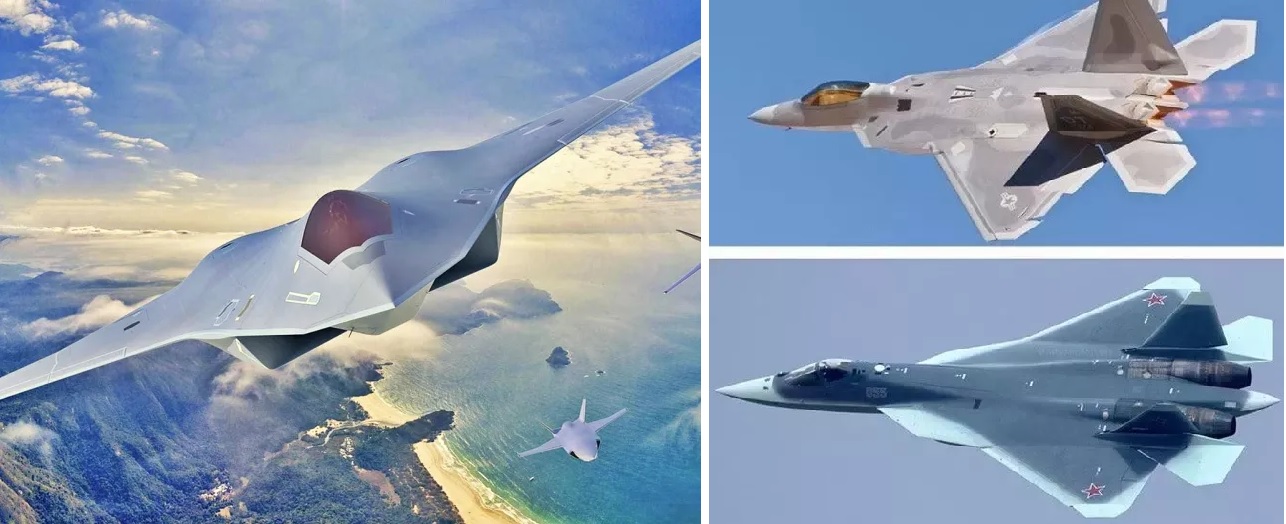 Key Differences Between 5th vs. 6th Generation Fighter Jets
Key Differences Between 5th vs. 6th Generation Fighter Jets
-
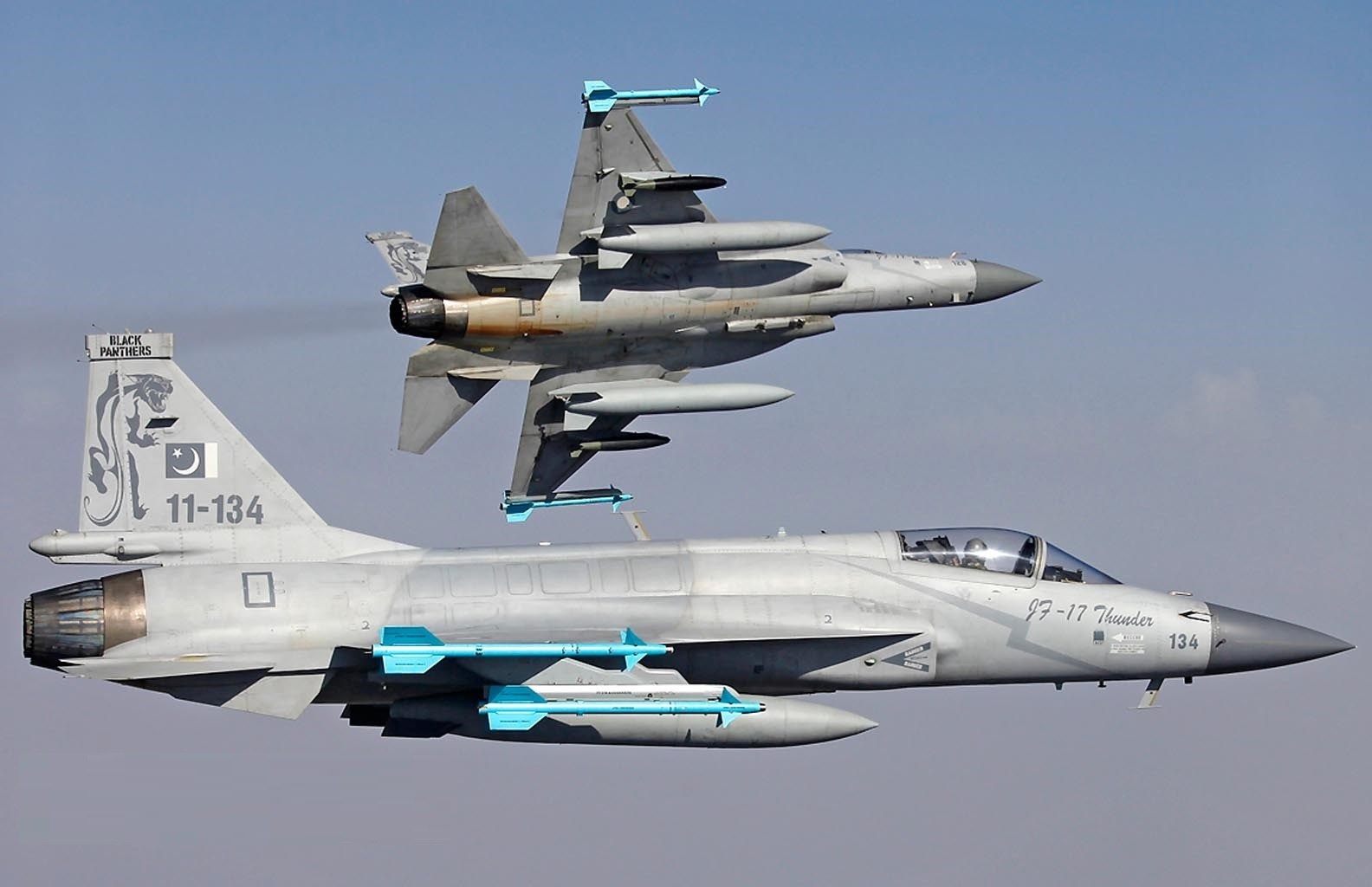 Pakistan Air Force to Unveil Stealth-Enhanced JF-17 Block 4 Fighter Jet by 2028
Pakistan Air Force to Unveil Stealth-Enhanced JF-17 Block 4 Fighter Jet by 2028
-
 Pakistan Announces 15% Increase in Defence Budget for 2024-25 Amid Economic Crisis
Pakistan Announces 15% Increase in Defence Budget for 2024-25 Amid Economic Crisis
-
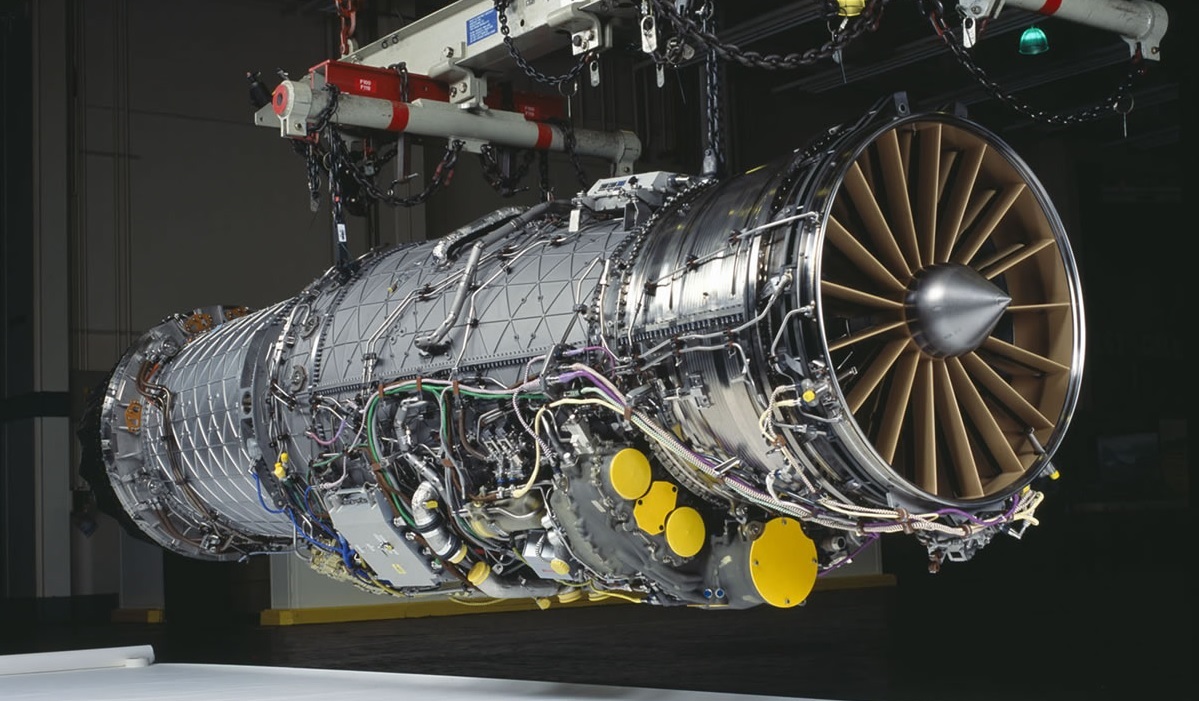 India’s AMCA Engine Decision: Safran vs. Rolls-Royce Final Expected by 2025
India’s AMCA Engine Decision: Safran vs. Rolls-Royce Final Expected by 2025
-
 India's TEDBF Program Takes Shape First Flight by 2028: Aiming for Naval Supremacy with Advanced Stealth and Technology
India's TEDBF Program Takes Shape First Flight by 2028: Aiming for Naval Supremacy with Advanced Stealth and Technology
-
 What Would Happen if the USA Left NATO? A Comprehensive Analysis
What Would Happen if the USA Left NATO? A Comprehensive Analysis
Top Trending in 4 Days
-
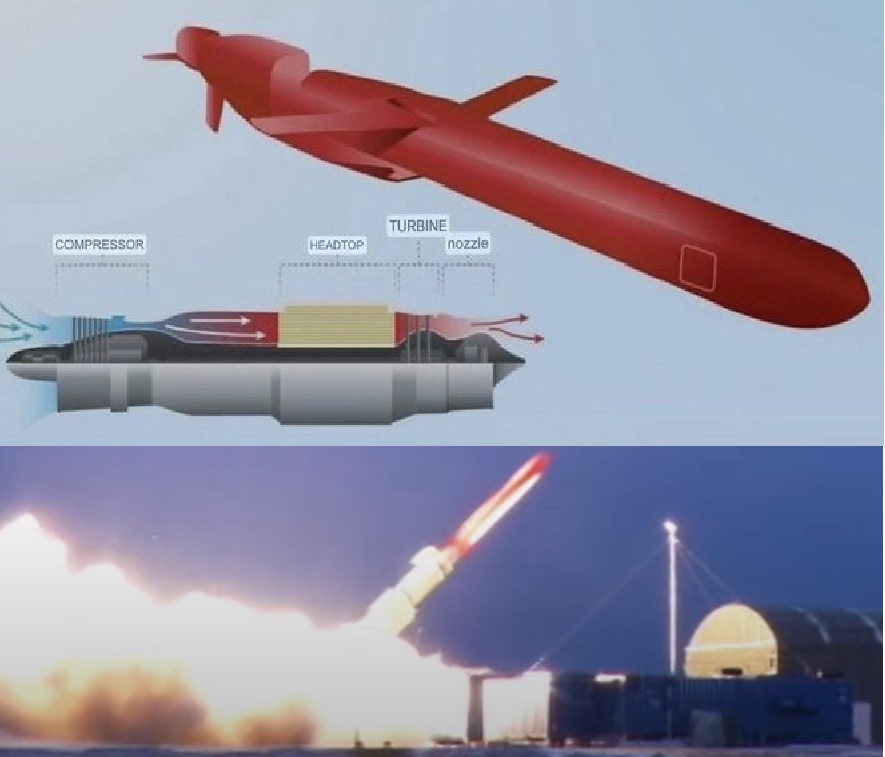 Putin Confirms Russia’s Successful Test of 9M730 Burevestnik — The “Skyfall” Nuclear-Powered Cruise Missile with Unlimited Range
Putin Confirms Russia’s Successful Test of 9M730 Burevestnik — The “Skyfall” Nuclear-Powered Cruise Missile with Unlimited Range
-
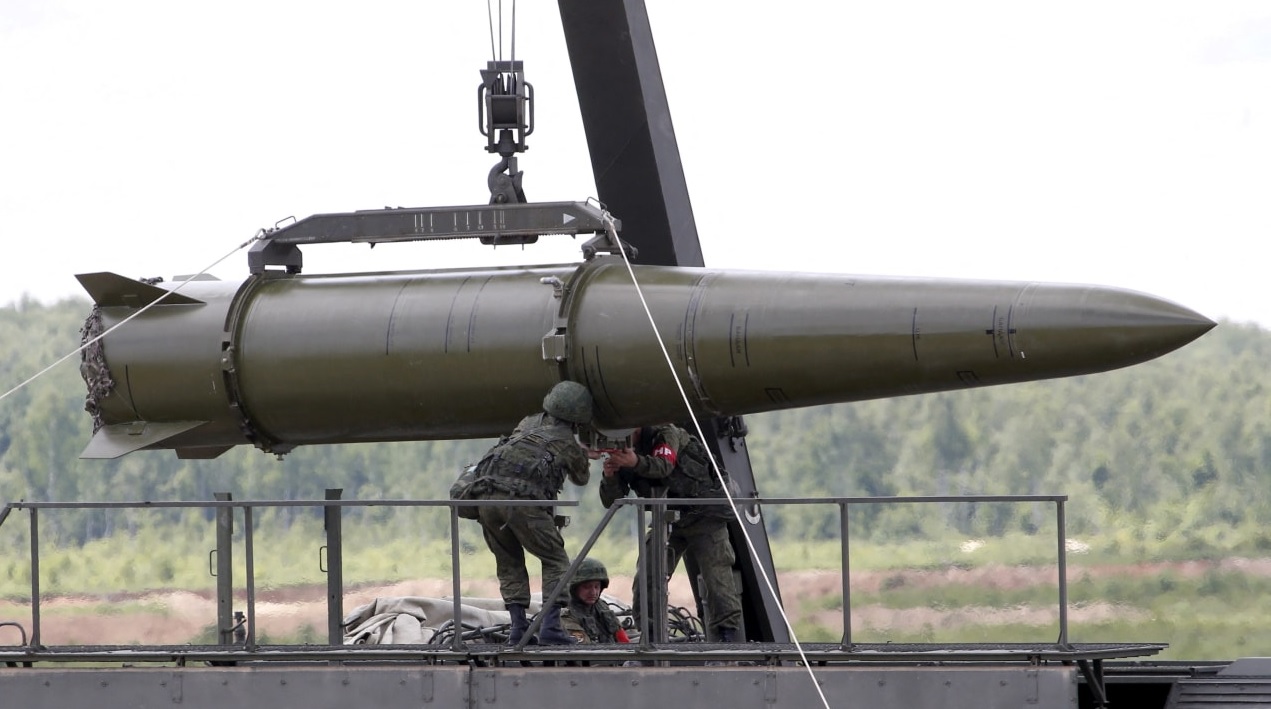 Russia Leaked Documents Reveal True Scale of Russia’s Missile Arsenal: Billions Spent on Kalibr, Iskander, and Kinzhal Programs
Russia Leaked Documents Reveal True Scale of Russia’s Missile Arsenal: Billions Spent on Kalibr, Iskander, and Kinzhal Programs
-
 China Unveils World’s First Brain-Like Mini Supercomputer, the BIE-1
China Unveils World’s First Brain-Like Mini Supercomputer, the BIE-1
-
 Elon Musk Admits China’s Zhuque-3 Surpasses Falcon 9 in Next-Gen Rocket Technology
Elon Musk Admits China’s Zhuque-3 Surpasses Falcon 9 in Next-Gen Rocket Technology
-
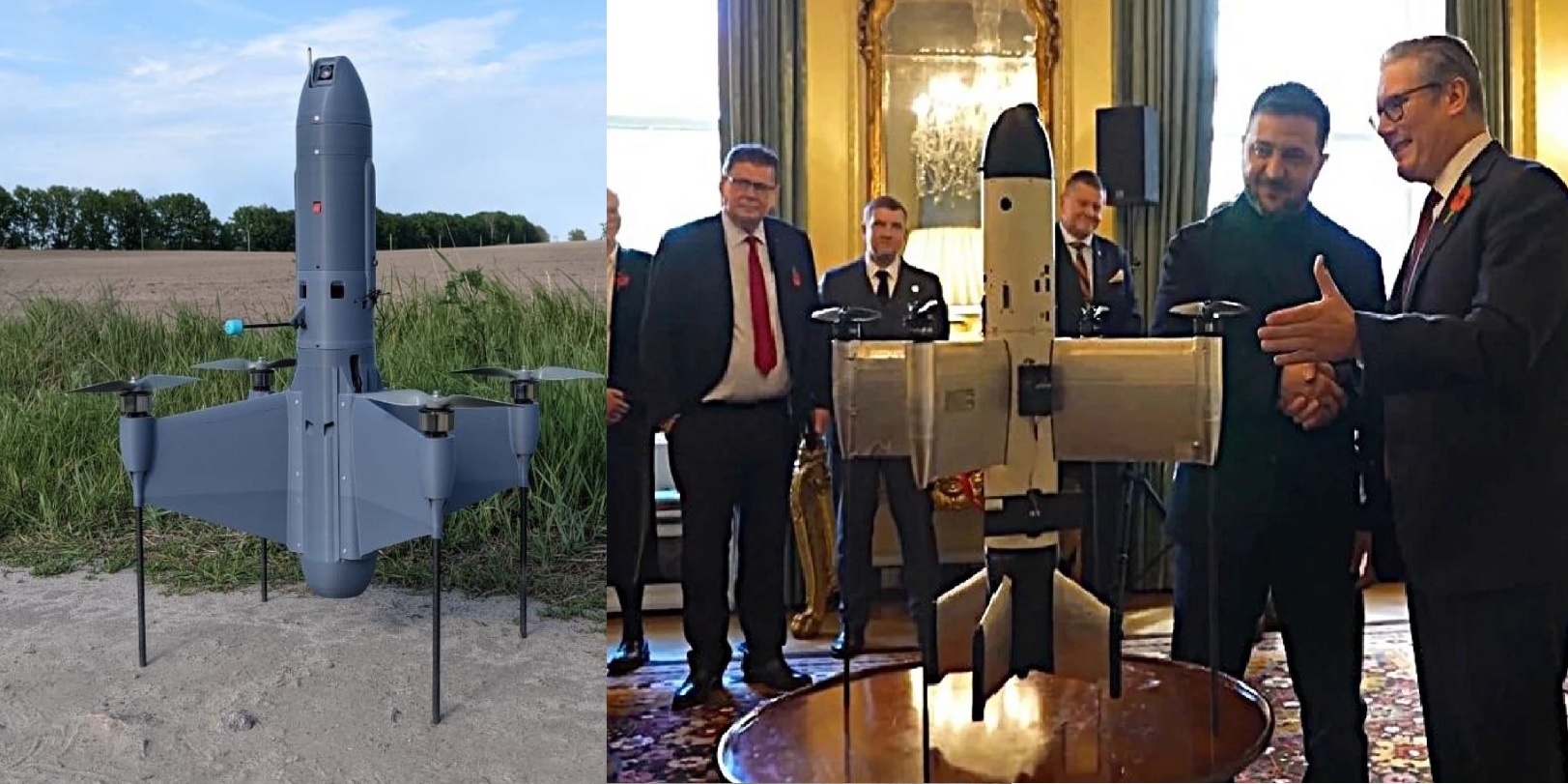 Octopus-100 Interceptor Drones Enter UK Production Under Build with Ukraine
Octopus-100 Interceptor Drones Enter UK Production Under Build with Ukraine
-
 How China Used UAE to Supercharge Its Missiles with U.S, U.K, and French Technology
How China Used UAE to Supercharge Its Missiles with U.S, U.K, and French Technology
-
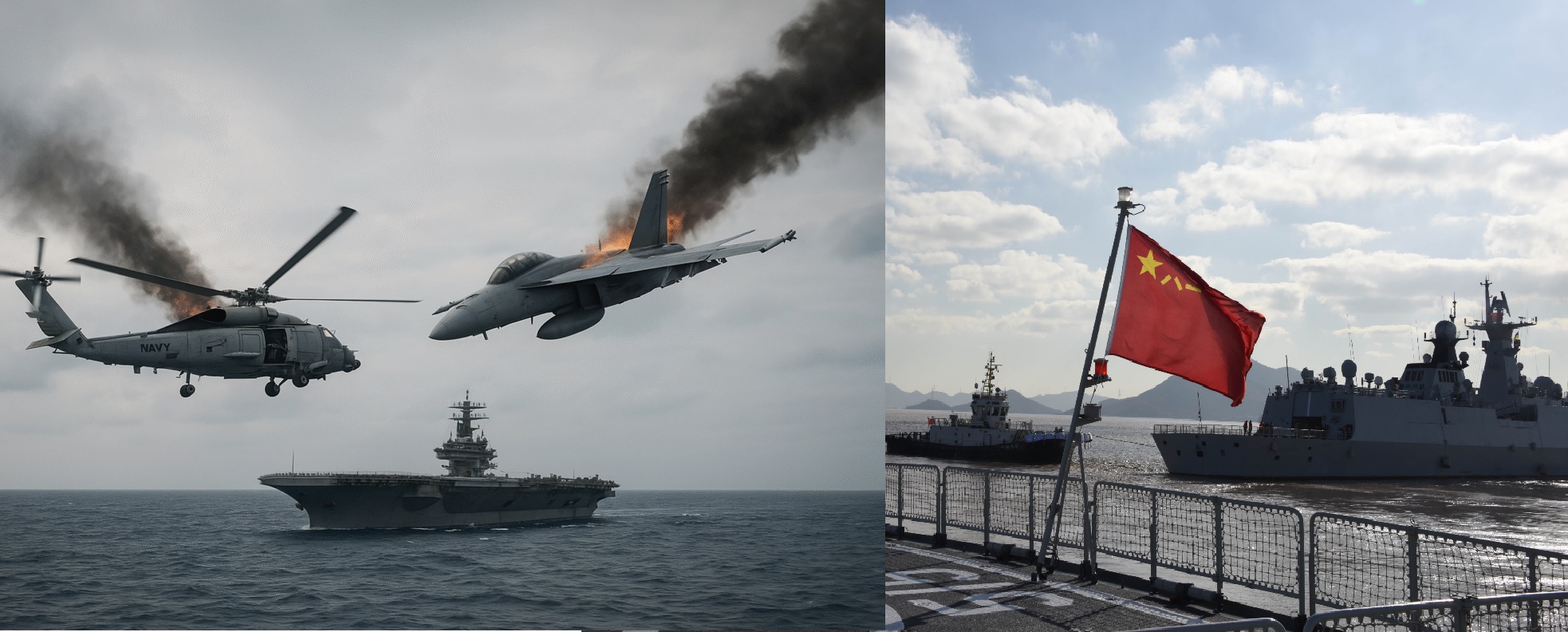 Two U.S. Navy Aircraft Go Down in South China Sea Within 30 Minutes During Chinese Military Exercises : Look Suspicious
Two U.S. Navy Aircraft Go Down in South China Sea Within 30 Minutes During Chinese Military Exercises : Look Suspicious
-
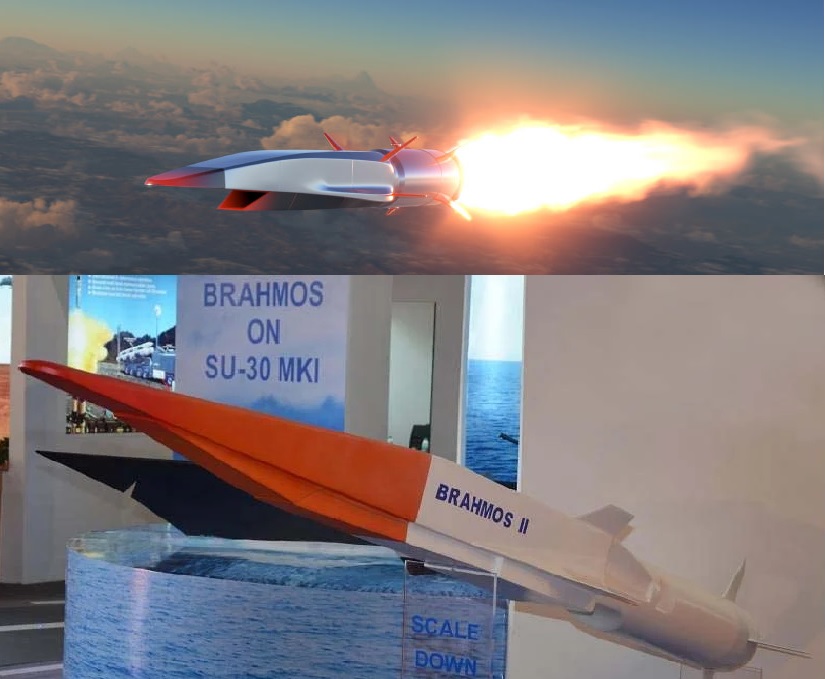 India and Russia Set to Approve BrahMos-II Hypersonic Missile Featuring Russian Propulsion and Indian EW-Resistant Avionics
India and Russia Set to Approve BrahMos-II Hypersonic Missile Featuring Russian Propulsion and Indian EW-Resistant Avionics
